Nursing Home Visit
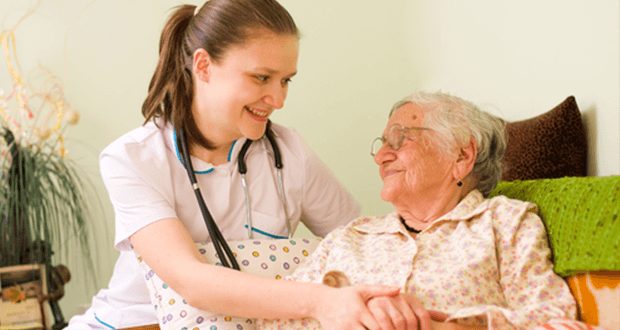

Description
A nursing home visit is a family- nurse contact which allows the health worker to assess the home and family situations in order to provide the necessary nursing care and health related activities. In performing home visits, it is essential to prepare a plan of visit to meet the needs of the client and achieve the best results of desired outcomes.
- To give care to the sick, to a postpartum mother and her newborn with the view teach a responsible family member to give the subsequent care.
- To assess the living condition of the patient and his family and their health practices in order to provide the appropriate health teaching.
- To give health teachings regarding the prevention and control of diseases.
- To establish close relationship between the health agencies and the public for the promotion of health.
- To make use of the inter-referral system and to promote the utilization of community services
The following principles are involved when performing a home visit:
- A home visit must have a purpose or objective.
- Planning for a home visit should make use of all available information about the patient and his family through family records.
- In planning for a home visit, we should consider and give priority to the essential needs if the individual and his family.
- Planning and delivery of care should involve the individual and family.
- The plan should be flexible.
The following guidelines are to be considered regarding the frequency of home visits:
- The physical needs psychological needs and educational needs of the individual and family.
- The acceptance of the family for the services to be rendered, their interest and the willingness to cooperate.
- The policy of a specific agency and the emphasis given towards their health programs.
- Take into account other health agencies and the number of health personnel already involved in the care of a specific family.
- Careful evaluation of past services given to the family and how the family avails of the nursing services.
- The ability of the patient and his family to recognize their own needs, their knowledge of available resources and their ability to make use of their resources for their benefits.
- Greet the patient and introduce yourself.
- State the purpose of the visit
- Observe the patient and determine the health needs.
- Put the bag in a convenient place and then proceed to perform the bag technique .
- Perform the nursing care needed and give health teachings.
- Record all important date, observation and care rendered.
- Make appointment for a return visit.
- Bag Technique
- Primary Health Care in the Philippines
2 thoughts on “Nursing Home Visit”
Thanks alots for the impressive lessons learnt from the principal of community health care and nursing home
Home visit nursing
Leave a Comment Cancel reply

Nursing Home Visit – Tips & What To Expect
If you are preparing for your first nursing home visit, read this guide. This is packed with helpful tips so you can be prepared.
Reasons Nurses Do Home Visits
There are lots of reasons that a nurse might visit someone’s home. Before I share some of my tips, it’s important to understand the purpose of the visit. Each type of home visit will have different goals and outcomes, so you’ll do different things when you arrive.
These are the main reasons that nurses might do home visits:
- Care for a sick patient as a home-care nurse
- Teach care techniques to a postpartum family
- Assess the living condition of a patient and/or their family members for upcoming care
- Teach people about prevention and control of diseases from within their homes
- To promote the utilization of community services
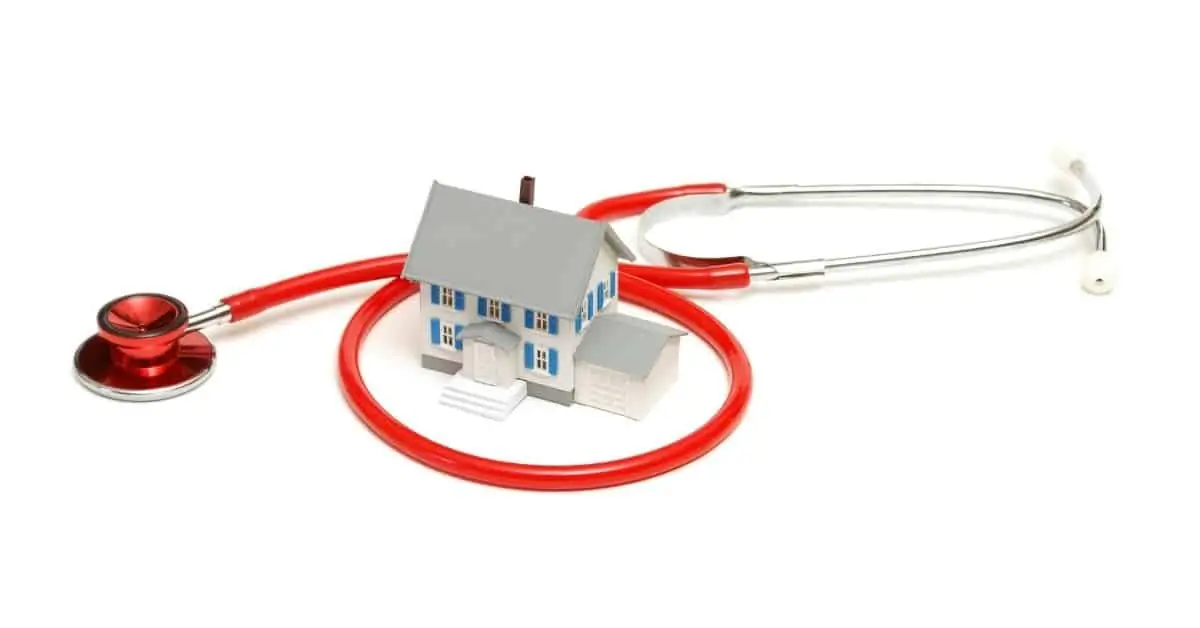
7. Make Another Appointment
Your chances of doing a home visit as a nurse will depend on where you work. Typically, community outreach organizations and home health care agencies will do the most frequent home visits.
How To Decide Whether To Do A Home Visit
If you are a new nurse, you probably won’t be the one making the decision about whether to visit a patient’s home, but it is still good to know how the decision is made.
Typically, these are the main guidelines that health care providers use to decide whether nurses should visit a patient in their home:
- The needs of the patient and their family – including physical, psychological, and educational
- Patient and family’s acceptance and willingness to cooperate
- Patient and family’s ability to recognize their needs and their ability to use the resources for their benefits
- How many health personnel are already involved in the care of this specific family
- The policy of the agency in regards to the home visits
How To Do A Home Visit
When it comes time to do your first home visit, just follow these steps in order. This will help you have a pleasant experience and make sure you don’t forget something important.
1. Greet The Patient
Arrive with a smile and introduce yourself. Remember to state where you are coming from and your role in the agency. Make sure you ask them their name and what they prefer to be called (if they have a nickname).
2. Tell Them The Purpose Of The Visit
Go into detail about why you are there and what you are hoping to accomplish. This part should be detailed so that they know what to expect.
3. Assess The Patient
Next you will do a quick observation and assessment. This is a silent and mental one so that you know what you will have to do while on your visit.
4. Set Your Bag In A Clean Place
Make sure your bag is sitting on a table that is lined with clean paper. Then, wash your hands with soap and water. Take out all the tools you will need for your visit so they are easy to access. Put on an apron, close the bag, and you are ready for your nursing care treatment.
5. Perform Your Nursing Care
After you are all prepared, you can do the care which you came to do. One of the most important things you will do on these visits is educate the patient and/or their family. Listen to their questions attentively and answer them the best you can. Direct them to any community services if you cannot help them right away.
6. Keep Excellent Records
Write everything down. Record the date, what you observed, and all the care you gave the patient. Also write down everything you told the family for caring for the patient at home.
If necessary, make an appointment to return and give more care. This is always needed, but don’t leave until you verified whether they need a follow up.
Nursing Home Visit: Final Thoughts
It might be nerve-wracking to think about visiting a patient or their family at their home. If you are really nervous, you can ask a friend or family member to help you prepare. Do a few practice runs as you introduce yourself and go through the motions of the assessment and care.
Set realistic expectations for yourself. If you need notes to remember what to ask, then take them along. Always ask for help when you need it. These can be very valuable and give the education and support that the patient and/or their family
More Nursing Tips
If you enjoyed these nursing home visit tips, then here are some more tips and advice about life as a nurse.
- How To Get ACLS Certified
- How To Write A Cover Letter
- The Best Accelerated Nursing Programs
About The Author
Brittney wilson, bsn, rn, related posts.

Debunking 5 Myths About Millennial Nurses

Male Nurse Jokes and Memes For All the Murses Out There
The nursing process as an administrative nurse.

Best Medical Dictionaries for Nurses
Leave a comment cancel reply.
Your email address will not be published. Required fields are marked *
Save my name, email, and website in this browser for the next time I comment.
This site uses Akismet to reduce spam. Learn how your comment data is processed .
Start typing and press enter to search
Make the Most of a Nursing Home Visit During the Pandemic
Keep these tips in mind to bring cheer to your loved one.
This article is based on reporting that features expert sources.
The Visitors' Guide to Nursing Homes
Nursing home visits are challenging at any time, and even more so during the pandemic. Most nursing homes now have strict visiting rules in place to protect residents from exposure to COVID-19, such virtual, window or drive-up visits (with visitors staying in their cars). Some nursing homes allow for socially distanced outdoor or indoor visits (although indoor visits are limited to isolated areas designated for family, not visits in the resident's room).

Getty Images
No matter what form the visit takes, you’ll want to make the most of the time with your loved one. "It is very lonely for seniors in nursing homes today and they crave validation, fond memories of family events and affirmation of their value and dignity," says Teri Dreher, a board-certified patient advocate and owner of a patient advocate company in Chicago.
Prepare for a Good Nursing Home Visit
Do your homework before the visit. To prepare, you can:
- Find out about the rules and restrictions. Ask what kind of visit is permitted and how much time you're allowed.
- Consider the time of day. Does your loved one need to stick to a schedule of meals or naps that can’t be interrupted? Does the visit need to be coordinated with the weather?
- Ask if you can bring along a friend or a family member, such as your spouse, sibling or child. Visits are a great time for older adults to see their grandchildren , even if it's just through a window.
- Make arrangements for potential challenges. These may include a loved one’s soft voice that you may not hear from 6 feet away in a socially distanced visit or poor hearing that may keep your loved one from understanding you. Nonprescription assistive hearing devices or face masks with a clear “window” (if your loved needs to read lips) can foster better communication.
- Think about questions you'd like to ask staff during the visit. “Make certain all of your questions for the staff are prepared well in advance before you arrive. Make your questions succinct; thank the workers and always be polite. Health care workers in nursing homes today are under a lot of pressure and have more restrictions on their time,” Dreher advises.
Make Observations
During your visit – whether it’s in person, through a window or via video call – take note of your loved one’s health . “Observation, even if just through a window, can give you some idea of your loved one’s physical condition – for instance, if their clothes are clean, if their hair is brushed or if they’ve lost weight ,” says Robyn Grant, director of public policy and advocacy at the National Consumer Voice for Quality Long-Term Care.
Grant says it’s important to observe the facility (for example, is it clean or does it smell?) and staff behavior. “Are they wearing face masks? Are they washing their hands or using hand sanitizer before and after contact with your loved one?” Grant asks.
She also recommends asking your loved about his or her experience in the nursing home, such as:
- Are there enough staff to help you when you need it?
- How do you spend your day? Are you getting outside your room?
- How have your meals been?
- Are staff giving you baths or showers and changing your clothes daily?
What to Do Together
The nature of visiting restrictions may determine what you can do. You may be permitted to stroll or roll (if your loved one is in a wheelchair) around the nursing home grounds. If that’s not possible, perhaps you can still:
- Play a video game (such as a card game) while sitting 6 feet apart. Electronic devices such as iPads can make that work.
- Listen to favorite music together.
- Sing songs on a video call.
- Use a video call to give your loved one a tour of something (your house or yard) or have grandchildren demonstrate an activity they’re involved in (playing a musical instrument, for example).
- Assist your loved one with errands. Make a shopping list together so you can go out and get needed items.
- Present your loved one with something special. Find out what’s permitted in advance, and consider bringing some special sweets, a meal from your loved one’s favorite restaurant or meaningful objects (label them first). “Framed pictures of family members, new pajamas, a soft blanket and favorite magazines are nice gifts. Anything you can do to bring love and joy will be very appreciated,” Dreher says.
How do you decide what to do? “Take cues from your loved one and let them guide the visit,” Grant advises. “Remember the visit is about them and their needs.”
What to Talk About
Conversation will take center stage during your visit, even if your loved one isn’t able to chat much anymore. Some guidelines:
- Express positive emotions. “Tell your loved one how good it is to see them, how much you’ve missed them and how much you’ve thought of them,” Grant recommends. “If they're excited to talk to you, let them lead the conversation.”
- Keep it light. “Try to keep the visit social and not bring up stressful topics,” Dreher suggests.
- Be aware of who's steering the conversation. "If they're excited to talk to you, let them lead the conversation. They may just enjoy sharing their thoughts and experiences. Alternatively, if they're quiet or withdrawn, you can lead the conversation, sharing positive experiences and thoughts," Grant advises. "Try to answer the questions they ask and remember to keep the focus on their needs."
- Reminisce about happy times , such as previous holidays, special milestones or nice things the person has done for you in the past that you still appreciate.
- Bring your loved one up to date about positive things happening in your life or your family members’ lives. Let your loved one know what’s happening outside of the nursing home walls so they can feel involved in your life.
- Remind them of things they can look forward to. Having an eye on something positive in the future brings purpose and helps people get through tough times.
If your loved one wants to talk about something serious, listen and show empathy. It could be a helpful cathartic moment for them.
Some Final Advice
Remember that your loved one is in a nursing home because he or she is frail and needs lots of assistance to get through the day. Try to be gentle:
- Be sensitive to memory changes . If your loved one has any cognitive impairment, don’t press them about people or past experiences if they don’t remember. If they repeat themselves or ask the same questions, be patient.
- Make a "soft" exit. It can be hard to leave when your visiting time is over. Consider coordinating your visit with an upcoming activity, such as a nap or lunch. Once your loved one is absorbed in what's happening, your departure won't feel so upsetting.
- Share feedback with staff. Report any concerns to a nurse or go up the chain of command to the nursing director or administrator.
And schedule another visit soon. It will bring meaning to your loved one and give them a reason to keep going, especially during the pandemic.
The Best Ways for Nursing Home Residents to Stay Active

The U.S. News Health team delivers accurate information about health, nutrition and fitness, as well as in-depth medical condition guides. All of our stories rely on multiple, independent sources and experts in the field, such as medical doctors and licensed nutritionists. To learn more about how we keep our content accurate and trustworthy, read our editorial guidelines .
Dreher is the president of NShore Patient Advocates LLC in Chicago.
Grant is the director of public policy and advocacy at the National Consumer Voice for Quality Long-Term Care.
Tags: senior health , nursing homes , caregiving , aging , family health , senior citizens , health , health care , assisted living
Most Popular
Senior Living

Senior Care

Best Assisted Living Communities

health disclaimer »
Disclaimer and a note about your health ».
Sign Up for Our 3-Day Guide to Medicare
Confused about Medicare? We can help you understand the different Medicare coverage options available to help you choose the best Medicare coverage for you or a loved one.
Sign in to manage your newsletters »
Sign up to receive the latest updates from U.S News & World Report and our trusted partners and sponsors. By clicking submit, you are agreeing to our Terms and Conditions & Privacy Policy .
You May Also Like
When medicare nursing home coverage ends.
Understanding what happens when Medicare ends its coverage for skilled nursing care is crucial for the well-being of your loved ones. In this informative guide, we'll walk you through what Medicare covers, when the coverage ends and options for what to do.
Ruben Castaneda and Paul Wynn Jan. 19, 2024

Nursing Homes vs. Assisted Living
Learn about the key differences between nursing homes and assisted living communities to determine which is the best option for your loved one.
Payton Sy Dec. 7, 2023

Nursing Home Statistics
Learn about what nursing homes are, who lives in them and how much they cost.
Elaine K. Howley Nov. 30, 2023

FAQ: How We Rate Nursing Homes
In 2023-2024, ratings were determined by nurse staffing, patient outcomes and whether steps known to be effective in avoiding harm and improving health were built into nursing home routines.
Zach Adams and Chelsey Wen Nov. 14, 2023

Antipsychotic Drugs in Nursing Homes
The use and ethics of antipsychotic drugs in nursing homes is an ongoing discussion. Learn why these medications are sometimes misused and how can you advocate for your loved one.
Elaine K. Howley Nov. 13, 2023

IntelyCare for Healthcare Facilities > Resources > Compliance and CMS Ratings > What Are the Rules for Nursing Home Visits? FAQ for Facilities
What Are the Rules for Nursing Home Visits? FAQ for Facilities
Search resource center.
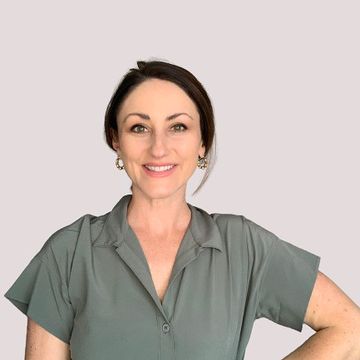
The COVID-19 Public Health Emergency (PHE) tested many aspects of healthcare — especially infection control. It resulted in the emergence of new infection prevention strategies, including visitor restrictions in healthcare facilities. These were particularly important in nursing homes, where it’s challenging to keep a highly vulnerable population safe.
While visitation guidelines stabilized after the federal COVID-19 PHE ended, you may be left wondering, What are the rules for nursing home visits? We’ll go over the most frequently asked questions about CMS visitation policies so that you can understand how they may affect your facility.
Overview of Infection Prevention in Nursing Homes
Before we answer the question, What are the rules for nursing home visits? it’s worth noting the other infection prevention regulations that are in place. CMS collaborates closely with the CDC to ensure the most current practice standards are available for Medicare and Medicaid facilities.
Primary prevention is crucial to preventing transmission of COVID-19 in nursing homes. CMS regulations require all nursing home staff to be vaccinated against COVID-19 to participate in Medicare and Medicaid programs. Nursing home residents are also encouraged to get vaccinated. Their vaccination status should be documented as “up-to-date“ or “not up-to-date“ instead of “vaccinated“ or “unvaccinated.“
Additionally, facilities must adhere to the CDC’s core principles of infection prevention , which include guidance covering topics like:
- Hand washing
- Staff personal protective equipment (PPE) use
- Cleaning and disinfecting, especially surfaces that are used at a high-frequency
- Visitor education about infection control policies, such as mask use or hand hygiene, displayed throughout the facility
Overview of Quarantine Guidelines in Nursing Homes
The CDC and CMS support quarantining nursing home residents if they test positive for COVID-19. Facilities may adjust their quarantine guidelines based on recommendations from their state or local health departments. Here are the CMS quarantine guidelines for nursing homes:
- If a nursing home resident contracts an infectious illness, they shouldn’t participate in communal activities. They may be placed on transmission-based precautions or quarantine.
- Residents with a positive COVID-19 infection should be placed in a single-person room when possible.
- Residents are not required to quarantine after leaving the facility for less than 24 hours.
- If an outbreak occurs in a facility, residents in the affected area may be required to quarantine. The CDC recommends testing residents every 3-7 days until there are no new cases for two weeks.
What Are the Rules for Nursing Home Visits ? FAQ
CMS visitation guidelines for nursing homes recognize the psychosocial impact of allowing visitors. Nursing home residents benefit from socialization — it improves mood, promotes activity, and supports healthier overall well-being. Visitation also promotes patient-and-family-centered care, which can improve patient satisfaction at your facility.
This consideration, along with ensuring a sufficient number of nursing home residents are vaccinated against COVID-19 and other contagious pathogens, allows facilities to relax their visitation policies. Post-COVID-19 updates that may impact your facility include the following.
Can a nursing home deny visitors?
According to CMS, facilities may no longer restrict the number of visitors and the length or frequency of their stay. CMS says nursing home residents have the right to make choices about their life in the facility that are significant to them, such as seeing their loved ones. They may also make their own choice to deny visitors. Facilities that violate CMS regulations may be subject to citation.
Facilities may enforce visitor restrictions for high-risk residents (for example, someone who is severely immunocompromised). However, restrictions can be overridden for compassionate care visits (such as an impending death). In the event of an infectious disease outbreak, facilities may consult with their local health department for assistance with visitation guidelines.
Do visitors need to wear masks?
Mask mandates depend on community transmission rates. If a community is experiencing high transmission rates (or if the facility has an outbreak), CMS recommends everyone in the facility wear masks. If community transmission is not high, it’s up to the facility to implement the appropriate infection prevention measures . Decisions can be informed by CDC recommendations or consultation with state or local health departments.
Can facilities restrict indoor visits?
CMS regulations allow visitors at all times, even during an infectious disease outbreak. Outdoor visitation is preferred during an infectious disease outbreak, but facilities may not restrict indoor visits. Facilities should follow these guidelines for indoor visitation:
- Visitors should keep to the resident’s room during a visit, and avoid going to other parts of the facility during an outbreak.
- Physical contact is allowed, but residents and visitors should be made aware of their risk during the visit.
- Visitors may choose to take off their masks in a resident’s room unless a roommate is present.
C an family stay overnight in nursing home facilities ?
Some facilities may have a suggested nursing home visiting hours policy, but CMS does not specify restrictions for families who wish to stay overnight. If visitors are staying overnight at your facility, it’s important to ensure that all other aspects of their stay adhere to visitation guidelines.
Can facilities restrict visits from service providers?
Traffic in a nursing home isn’t limited to healthcare staff and residents’ families. Facilities must allow entry to all visitors, such as vendors and service providers, to be compliant with CMS guidelines covering nursing home visitation policies.
Anyone with an active infection should avoid entering the facility. Visitors should take precautions when visiting a resident with an infection. CMS says nursing home residents have the right to meet with a healthcare ombudsman , regardless of infection status.
Healthcare surveyors, who suspended operations during the pandemic , should proceed as usual. They are expected to take proper precautions to conduct surveys. Facilities should not deny entry to surveyors based on their vaccination status.
Get More Tips on CMS Compliance
Now that you can answer the question, What are the rules for nursing home visits? You may be looking for more resources on regulatory compliance. Find tips about CMS nursing home visitation policies and more when you subscribe to IntelyCare’s free newsletter.
Related Articles
The support act and healthcare facilities: 5 key takeaways, patient dumping: overview and faq for facilities, do hospital rooms have cameras faq from staff and patients, what to include in a hipaa business associate agreement, improving the patient experience in healthcare: 5 strategies, related jobs, stay in the know, with the latest industry insights and trends.
- Skip to main content
- Keyboard shortcuts for audio player

Coronavirus Updates
The coronavirus crisis, indoor visits with nursing home residents ok, new cdc guidance says.
Scott Neuman

A CVS pharmacist gives the Pfizer/BioNTech COVID-19 vaccine to a resident at the Emerald Court senior living community in Anaheim, Calif., in January. Federal health officials have revised advice on nursing home visitations for the first time since September. Paul Bersebach/MediaNews Group via Getty Images hide caption
A CVS pharmacist gives the Pfizer/BioNTech COVID-19 vaccine to a resident at the Emerald Court senior living community in Anaheim, Calif., in January. Federal health officials have revised advice on nursing home visitations for the first time since September.
Health officials have relaxed federal COVID-19 guidance for nursing homes for the first time since September, recommending that even unvaccinated visitors and residents be allowed to meet in person under most circumstances.
"Facilities should allow indoor visitation at all times and for all residents (regardless of vaccination status), except for a few circumstances when visitation should be limited due to a high risk of COVID-19 transmission," the Centers for Medicare & Medicaid Services , or CMS, said in advice issued Wednesday.
The revised advice also said that "compassionate care visits should be permitted at all times."
In the latest guidance, however, the CMS recommends that indoor visit should be limited in cases where an unvaccinated resident is in a county where the coronavirus positivity rate exceeds 10% and fewer than 70% of the facility's residents are fully vaccinated.
Other exceptions are for residents confirmed to have COVID-19 — regardless of their vaccination status — and residents in quarantine.
While indoor visits are acceptable, outdoor visits pose less risk and are "preferred even when the resident and visitor are fully vaccinated," the guidelines said.
The revised recommendations are a further sign that the U.S. may be finally turning the corner on the coronavirus pandemic, a year after it began. Nearly 530,000 people in the U.S. have died of COVID-19, according to the latest data from Johns Hopkins University . The number of new coronavirus infections among the general U.S. population has also been generally declining since January, although that positive trend appears to have leveled off at about 60,000 new cases a day.
In other guidance earlier this week, the CDC said individuals who are fully vaccinated can spend time indoors with other fully vaccinated people without wearing masks or social distancing.
The CDC also said fully vaccinated people can socialize with "unvaccinated people from a single household who are at low risk for severe COVID-19 disease indoors without wearing masks or physical distancing."
However, people who are fully vaccinated should still wear masks in public, the guidance stated.
Nearly 63 million Americans — or nearly 19% of the U.S. population — have received at least one dose of a coronavirus vaccine, and about 10% have been fully vaccinated. About a third of Americans 65 years or older have been fully vaccinated, according to the CDC .
Meanwhile, President Biden on Wednesday ordered an additional 100 million doses of the single-shot Johnson & Johnson vaccine in case of "unexpected challenges" in fighting the pandemic.
Biden said Americans would be given priority for the vaccines, but that any surplus would be shared with the world.
"We're not going to be ultimately safe, until the world is safe," he said .
- COVID-19 vaccine
- nursing homes
Nursing Visits
Home nurse visits.
Seniors At Home registered nurses can make home visits to coordinate health care and medical management needs.
Our expert nurses work with physicians, family members, and caregivers to coordinate care and detect medical issues early—and avoid any unnecessary hospitalizations. The goal of our visiting nurse service is to help you live a safer, healthier, more independent life at home.
- “Thank you so much for your help. The RN that visits my mother weekly has made us feel so comfortable—we are forever grateful.” Beverly, San Francisco
Our Visiting Nurse Service Includes
- Nursing assessment and consultation
- Medical care planning with physicians
- Individualized nursing care plans
- Medication management
- Medication organization and planning (Mediset pre-filling)
- Wellness checks
Seniors At Home is licensed by the state of California as a Home Health Agency; a California legal requirement to provide home nurse visits.
To learn more about our skilled nursing visits, call us at 415-449-3700 or fill in the form below.
Award-Winning Care
- “Seniors At Home is always my top recommendation when a patient needs home care because of their reliability, consistency, and wide scope of care. Families thank me for referring them to Seniors At Home.” Mary, Medical Social Worker, San Rafael
- “Seniors At Home is a very generous and sensitive organization that provides excellent service.” Margaret, 85, San Carlos
- “Knowing that there was a team behind the scenes helping us to orchestrate and manage mom’s care was invaluable.” Amy, Jennifer, and Jessica, San Francisco
- “After a very serious surgery, I was given excellent service and, most of all, support. Thank you for being there when I needed it the most.” Anna, 81, Rohnert Park
- “Thank you so much for the caring and support you’ve given my family and my dad. Everyone that came to our home became family. We appreciate everyone at Seniors At Home so very much!” Joe, Belmont
- “I greatly appreciate the excellent care and professional caliber of all personnel, from your office staff to my caregiver. I am always ready to recommend you!” Douglas, 79, Tiburon
Schedule Your Free Consultation
Call us today to get started or fill in the form below. We can also answer any questions you have about aging or senior care.
San Francisco
- Get Directions
- 415-449-3777
- 650-931-1860
Marin County
Sonoma county.
- 707-303-1530
Quick Links
- Become a Caregiver
Connect with Us
Stay up-to-date.
- Adoption Connection
- Center for Children and Youth
- Jewish Family & Children’s Services
- JFCS Holocaust Center
- Rhoda Goldman Plaza
Jewish Family and Children’s Services is a 501(c)(3) nonprofit under EIN: 94-1156528. All donations are tax deductible. · Privacy Policy · Terms of Service · © 2023 · Site by Fireman Creative
- Anatomy and Physiology
- Biochemistry and Nutrition
- Microbiology
- Nursing Foundation
- Medical Surgical Nursing I
- Community Health Nursing
- Communication Nursing Technology
- Pharmacology, Pathology and Genetics
- Child Health Nursing
- Medical Surgical Nursing
- Mental Health Nursing
- Research and Statistics
- Management Studies
- Bio sciences
- Behavioural Sciences
- Medical surgical Nursing I
- Medical surgical Nursing II
- Nursing Education and Introduction to Research and Statistics
- Community Health Nursing II
- Professional Trends and Adjustments
- Midwifery and Gynaecological Nursing
- Nutrition and Dietetics
- Biochemistry and Biophysics
- Maternal Nursing
- Medical and Surgical Nursing
- Introduction to Nursing Education
- Introduction to Nursing Administration
- Introduction to Nursing Research and Statistics
- Nursing Education
- Advance Nursing Practise
- Nursing Research and Statistics
- Clinical Speciality I
- Nursing Management
- Medical Surgical Nursing (MSN)
- Psychiatric Nursing
- Medical Disease and Condition
- Pharmacology (Drug Notes)
- Nurse Jobs and Career
- Nurse Article
- Nursing Examination
- Nursing Important Questions
- Nursing Procedure

NURSING PROCEDURES LIST CLICK HERE
NURSING IMPORTANT QUESTIONS – CLICK HERE
NURSE FUNDAMENTAL PROCEDURES
MEDICAL SURGICAL NURSING
KEY COMPONENTS IN HOME VISITS
1. Assessment:
- Conduct a thorough assessment of the home environment, including living conditions, safety hazards, and available support systems.
2. Purpose of the Visit:
- Clearly define the purpose of the home visit, whether it is for routine check-ups, health education, medication management, post-discharge follow-up, or addressing specific health concerns.
3. Appointment and Consent:
- Schedule home visits at convenient times for the client and obtain consent for the visit. Respect the client’s privacy and autonomy.
4. Communication:
- Establish effective communication with the client and their family. Listen actively, address concerns, and encourage open dialogue to better understand their needs.
5. Cultural Competence:
- Be culturally competent and respectful of the client’s cultural practices, beliefs, and values. Consider cultural factors when planning and delivering care.
6. Safety Precautions:
- Assess and address safety concerns in the home, including fall risks, fire hazards, and other environmental factors. Provide education on maintaining a safe living space.
7. Medication Management:
- Review medications with the client, ensuring proper administration and understanding. Address any concerns or questions regarding medications.
8. Health Education:
- Provide individualized health education on topics such as chronic disease management, nutrition, hygiene, and preventive care. Use visual aids and written materials as needed.
9. Family Involvement:
- Involve family members or caregivers in the care plan, as appropriate. Consider their support and collaboration in maintaining the client’s health.
10. Health Promotion: – Encourage and facilitate healthy lifestyle choices. Discuss strategies for maintaining or improving health and preventing illness.
11. Assessment of Activities of Daily Living (ADLs): – Evaluate the client’s ability to perform daily activities, such as bathing, dressing, and eating. Provide assistance or make recommendations for improvement as needed.
12. Monitoring and Follow-up: – Establish a plan for ongoing monitoring and follow-up. Determine the frequency of home visits based on the client’s needs and the nature of the healthcare issue.
13. Documentation: – Document the home visit thoroughly, including assessments, interventions, education provided, and any changes in the client’s health status. Maintain accurate and up-to-date records.
14. Collaboration with Other Healthcare Providers: – Collaborate with other healthcare professionals involved in the client’s care, such as physicians, therapists, and social workers. Ensure a coordinated and holistic approach.
15. Respect for Autonomy: – Respect the client’s autonomy and involve them in decision-making regarding their care. Encourage them to express their preferences and goals for health and well-being.
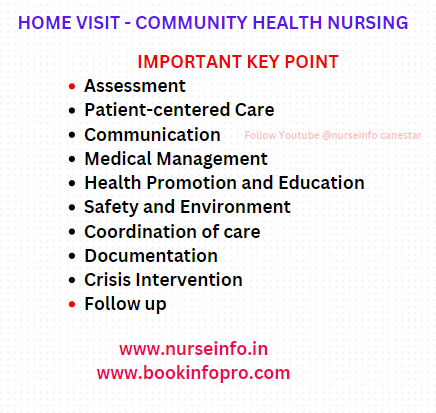
LEAVE A REPLY Cancel reply
Save my name, email, and website in this browser for the next time I comment.
Related article
Complete list of nursing notes link, concurrent & terminal disinfection, cardiopulmonary resuscitation (cpr), back care / back massage / back rub.

Living with chronic health conditions? We can help.
Our providers and care teams come to you, bringing care through house call visits. This in-home medical care is designed around understanding your health needs and goals. We work with you and your regular doctors to help you stay well and stay home.
House calls and video visits in 37 states.
Landmark partners with health plans to bring medical, behavioral health, and palliative care, along with social services, to patients in communities across the U.S. Our mobile providers visit patients in their homes through in-person house calls and telemedicine visits over video and phone.
We are the future of health care.
Landmark is one of the nation’s largest healthcare companies focused on in-home care of complex, chronic patients. Our physician-led provider groups support collaborative ties between community-based organizations, primary care providers, specialists and patients and their families.
patients nationally for which Landmark bears risk
reduction in hospital admissions
reduction in mortality
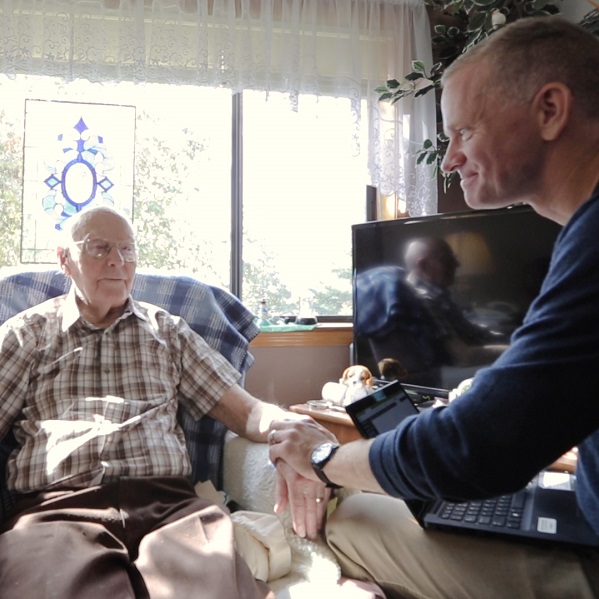
Discover the benefits.
- For Patients + Caregivers
- For Community Providers
- For Partners
Health care in your home
Old-fashioned house calls by medical doctors, nurse practitioners and physician assistants bring modern medicine to you. Feel better and stay well at home.
Covered by your health plan
The Landmark program works with health plans to improve access to care for patients with multiple chronic conditions. Landmark’s team-based care is available often at no cost to you.
Keep your current doctors
Landmark coordinates its care with your primary care provider, specialists and other community resources. Landmark provides added support to those who need it most.
Available 24 / 7
Our provider-staffed call center answers any time of the day or night. We also provide urgent visits to help you avoid unnecessary trips to the emergency room.
No waiting room
With Landmark house calls, you won’t need transportation to clinics and hospitals, and you avoid waiting rooms and exposure to germs.
Reduced stress
Patients and caregivers enjoy peace of mind with Landmark support. Landmark cares for the whole patient.
Landmark house calls put patients at the center of health care.
Collaborative care for complex patients.
Landmark’s community-based mobile providers bring coordinated care to patients with multiple chronic health conditions. We augment your care in the patient’s home.
Covered by health plans
The Landmark program is included in eligible patients’ health plans to improve care coordination and healthcare access for home-limited patients.
You remain the primary care provider
Landmark care is coordinated directly with you. Our providers reinforce your care plan in the home through physician-led interdisciplinary care teams.
Access our interdisciplinary team
Landmark’s interdisciplinary care team is available to you and your patients, including behavioral health specialists, social workers, palliative care specialists, nurse care managers and pharmacists.
Reduce administrative burden
We can help your highest acuity patients by managing post-acute care, home health orders, face-to-face encounters, and more.
24 / 7 availability
You can reach us any time, including weekends and holidays. We do urgent home visits to intervene if your patient experiences a chronic disease exacerbation.
Landmark supports your patients with complex health and social needs.
Chronic care management.
We’re one of the nations’ leading risk-bearing medical groups. We focus on giving your most complex members care when they need it, right in their home.
Over 250,000 patients across the country
We bear risk for over 250,000 complex, chronic patients, spanning Medicare Advantage, Medicaid, Dual, and Commercial, populations.
Behavioral, social and palliative care
Our team of multidisciplinary clinicians may include behavioral health specialists, palliative care practitioners, social workers, nurse care managers, dietitians and pharmacists.
Urgent in-home visits
One in four of our home visits is urgent. We bring medical care to your members when they need it, to avoid unnecessary emergency room trips and hospitalizations.

Built-for-purpose infrastructure
Our technology platform is designed specifically to support the medically vulnerable, clinically complex population.
Meaningful outcomes
Landmark commonly helps health plans achieve 4- and 5-star performance on Medicare STARS clinical quality of care, while caring for the most complex patients.
Landmark provides care for complex, chronic patients to positively impact access, satisfaction, outcomes and cost.
The doctor and nurses show they care about you and your health they are really there for you when you need them I love that they come to your house we did a zoom meeting with the nurse practitioner and she gave suggestions I really appreciate them
It was a pleasure to talk and see the doctor, she was very knowledgeable of all my conditions and gave me great advice to improve my health.
Joan was very helpful. It was nice getting to know her. How Landmark can help me
Practice health care the way you always wanted — with those who need it most.
Expert insights.
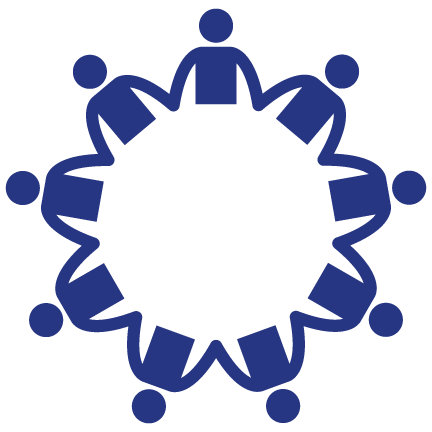
Prioritizing Mental Health as a Universal Human Right
By: Neltada Charlemagne, DNP, APRN, PMHNP-BC, PHN, BHC

Outsmart Unplanned Medical Costs: 10 Steps for Managing the Unexpected
Older adults can safeguard themselves from the physical, mental and emotional toll of unexpected medical costs.
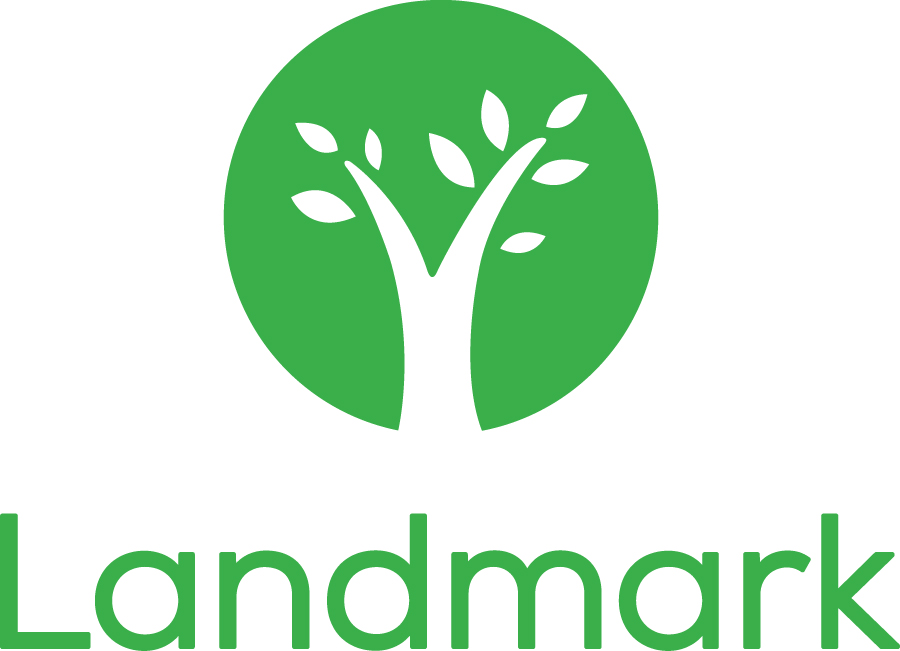
Optum Care Network – Monarch and Landmark Health bring care to you at home.
Optum Care Network – Monarch has teamed up with Landmark to deliver in-home medical care to members with multiple chronic conditions.
Have questions about Landmark? We’d love to hear from you.
An official website of the United States government
The .gov means it’s official. Federal government websites often end in .gov or .mil. Before sharing sensitive information, make sure you’re on a federal government site.
The site is secure. The https:// ensures that you are connecting to the official website and that any information you provide is encrypted and transmitted securely.
- Publications
- Account settings
Preview improvements coming to the PMC website in October 2024. Learn More or Try it out now .
- Advanced Search
- Journal List
- ScientificWorldJournal
- v.2021; 2021

The Practice of Home Visiting by Community Health Nurses as a Primary Healthcare Intervention in a Low-Income Rural Setting: A Descriptive Cross-Sectional Study in the Adaklu District of the Volta Region, Ghana
Kennedy diema konlan.
1 Department of Public Health Nursing, School of Nursing and Midwifery, University of Health and Allied Sciences, Ho, Ghana
2 College of Nursing, Yonsei University, 50-1, Yonsei-ro, Seodaemun-gu, Seoul 03722, Republic of Korea
Nathaniel Kossi Vivor
Isaac gegefe, imoro a. abdul-rasheed, bertha esinam kornyo, isaac peter kwao, associated data.
The data used to support the findings of this study are included within the article.
Home visit is an integral component of Ghana's PHC delivery system. It is preventive and promotes health practice where health professionals render care to clients in their own environment and provide appropriate healthcare needs and social support services. This study describes the home visit practices in a rural district in the Volta Region of Ghana. Methodology . This descriptive cross-sectional study used 375 households and 11 community health nurses in the Adaklu district. Multistage sampling techniques were used to select 10 communities and study respondents using probability sampling methods. A pretested self-designed questionnaire and an interview guide for household members and community health nurses, respectively, were used for data collection. Quantitative data collected were coded, cleaned, and analysed using Statistical Package for Social Sciences into descriptive statistics, while qualitative data were analysed using the NVivo software. Thematic analysis was engaged that embraces three interrelated stages, namely, data reduction, data display, and data conclusion.
Home visit is a routine responsibility of all CHNs. The factors that influence home visiting were community members' education and attitude, supervision challenges, lack of incentives and lack of basic logistics, uncooperative attitude, community inaccessibility, financial constraint, and limited number of staff. Household members (62.3%) indicated that health workers did not adequately attend to minor ailments as 78% benefited from the service and wished more activities could be added to the home visiting package (24.5%).
There should be tailored training of CHNs on home visits skills so that they could expand the scope of services that can be provided. Also, community-based health workers such as community health volunteers, traditional birth attendants, and community clinic attendants can also be trained to identify and address health problems in the homes.
1. Introduction
Home visit practice is a healthcare service rendered by trained health professionals who visit clients in their own home to assess the home, environment, and family condition in order to provide appropriate healthcare needs and social support services. The home environment is where health is made and can be maintained to enhance or endanger the health of the family because individuals and groups are at risk of exposure to health hazards [ 1 , 2 ]. At home visit, conducted in a familiar environment, the client feels free and relaxed and is able to take part in the activity that the health professional performs [ 1 ]. It is possible to assess the client's situation and give household-specific health education on sanitation, personal hygiene, aged, and child care. The important role the health professional plays during home visits (HV) cannot be overemphasized, and this led Ghana to adopt HV as a cardinal component of its preventive healthcare delivery system. This role is largely conducted by community health nurses (CHN) [ 2 ]. Health education given during HVs is more effective, resulting in behavioural change than those given through other sources such as the mass media [ 3 ].
In the home, the health professionals, mostly CHN monitor the growth, development, and immunization status of children less than 5 years and carry out immunization for defaulters. Care is given to special groups such as the elderly, discharged tuberculosis, and leprosy patients as well as malnourished children [ 1 , 2 ]. It is also possible to carry out contact tracing during HVs [ 2 ]. These services may prevent, delay, or be a substitute for temporary or long-term institutional care [ 4 , 5 ]. HV has potential for bringing health workers into contact with individuals and groups in the community who are at risk for diseases and who make ineffective or little use of preventive health services [ 2 ]. Several factors influence the conduct of HVs. These factors include location of practice, general practitioners age, training status, and the number of older patients on the list and predicts home visiting rate [ 6 ].
The concept of HV has remained in Ghana over the decades, and yet, its very essence is imperative [ 3 ]. In Ghana, home visiting is one of the major activities of CHN. The health visitors, as CHNs were then called, went from house to house, giving education on sanitation and personal hygiene [ 3 ]. These nurses attempt to promote positive health and prevent occurrence of diseases by increasing people's understanding of healthy ways of living and their knowledge of health hazards [ 7 ]. HVs remain fundamental to the successful prevention of deaths associated with women and children under five; yet, there still remain certain gaps in the successful implementation of this innovative intervention in Ghana [ 4 ]. In Sekyere West district in Ashanti Region of Ghana, although nurses had knowledge of home visiting and had a positive opinion of the practice, they could not perform their home visiting tasks or functions up to standard [ 8 ]. Home visiting practice in that district among nurses was found to be very low, even though community members desired more [ 8 ]. The findings indicate that there is a need for HV [ 9 ]. Also identified were several health hazards, such as uncovered refuse containers, open fires, misplaced sharp objects, open defecation, and other unhygienic practices that a proper home visiting regiment can address [ 8 ]. At the service level, lack of publicity about the service, the cost of the service, failure to provide services that meet clients' felt needs, rigid eligibility criteria, inaccessible locations, lack of public transport, limited hours of operation, inflexible appointment systems, lack of affordable child care, poor coordination between services, and not having an outreach capacity were identified as the challenges associated with this kind of service [ 9 – 13 ].
Home visiting is a crucial tool for enhancing family healthcare and the health of every community. Ghana Health Service through home visiting services has supported essential community health actions and address gaps in knowledge and community practices such as reproductive behaviour, nutritional support for pregnant women and young children, recognition of illness, home management of sick children, disease prevention, and care seeking behaviours [ 4 ]. As many interventions are implemented by stakeholders in health to ensure that home visiting practices actually benefit community members, recent studies have not delved into the practices of home visiting in poor rural communities especially in the Volta Region of Ghana. This study assessed the home visiting practices in the Adaklu district (AD) of the Volta Region.
This study assessed the practice of home visiting as a primary healthcare (PHC) intervention in a poor rural district in the Volta Region of Ghana.
2. Methodology
2.1. study design.
This mixed method study employed a descriptive cross-sectional study design as the study involved a one-time interaction with the CHNs and the community members to assess the practice of HVs.
2.2. Study Setting
The AD is one of the districts in the Volta Region of Ghana and has about 40 communities. The district capital and administrative centre is Adaklu Waya. The estimated population of the district was 36391 representing 1.7% of the Volta Region's population before the Oti Region was carved out [ 14 ]. The district is described as a rural district [ 14 ] as no locality has a population above 5000 people. The economically active population (aged 15 and above) represents 67% of the population [ 14 ]. The economically inactive population is in full-time education (55.1%), performed household duties (20.6%), or disabled or too sick to work (4.6%), while the employed population engages in skilled agricultural, forestry, and fishery workers (63.1%), service and sales (12.6%), craft and related trade (14.6%), and 3.4% other professional duties [ 14 ]. The private, informal sector is the largest employer in the district, employing 93.9% [ 14 ]. There are 15 health facilities in the district government health centres [ 4 ], one health centre by Christian Health Association of Ghana, and 10 community health-based planning services (CHPS) of which 5 are functional [ 15 ]. The housing stock is 5629 representing 1.4% of the total number of houses in the Volta Region. The average number of persons per house was 6.5 [ 14 ], and the houses are mostly built with mud bricks [ 15 ]. The most common method of solid waste disposal by households is public dumping in the open space (47.5%). Some households dump solid waste indiscriminately (17.3%), while other households dispose of burning (13.3%) [ 14 ].
2.3. Study Population, Sample, and Sampling Technique
There are about 36391 inhabitants with 6089 households in AD [ 14 ]. This study mainly involved adult members of the household and CHNs from randomly sampled communities in the district. These sampled communities included Abuadi, Anfoe, Ahunda, Dawanu, Goefe, Helekpe, Hlihave, Tsrefe, Waya, and Wumenu. An adult member of the household is a person above the age of 18 years who has the capacity to represent the household. CHN [ 11 ] from the selected communities in the district was recruited. A CHN is a certified health practitioner who combines prevention and promotion health practices, works within the community to improve the overall health of the area, and has a role to play in home visiting.
Estimating for a tolerable error of 5%, with a confidence interval of 95%, and a study population of 6089 households, with a margin of error of 0.05 using Yamane's formula for calculating sample for finite populations, a sample of 375 households were computed. The sample size was increased to 390 to take into consideration the possible effect of nonresponse from participants. Multistage sampling technique was adopted to eventually select study participants. Each community was stratified into four geographical locations: north, south, east, and west with respondents being selected from every second house using a systematic sampling approach. In each household, an adult member of the household responded to the questionnaire.
A whole population sampling method was used to select eleven [ 11 ] CHNs from the specific communities [ 10 ] where the study took place in the district. The CHN that served the 10 selected communities were selected. The numbers selected from each community were Helekpe (18.2%), Waya (18.2%), Anfoe (9.1%), Tsrefe (27.3%) and Wumenu (27.3%). This represented 42.3% of the total CHN community of the district at the time of the study.
2.4. Pretesting
The questionnaire and interview guide were piloted using 30 adult household members and 5 CHNs, respectively, at Klefe CHPS in the Ho municipality. The data collected through the questionnaire were subjected to a reliability test on SPSS (version 22). The pretesting ascertained the respondent's general reaction and particularly, interest in answering the questionnaire. The questionnaire was modified until it produced a Cronbach alpha coefficient of 0.790. It can therefore be concluded that the questionnaire had a high reliability in measuring the objectives of the study. The pretesting helped in identifying ambiguous questions and revising them appropriately. It also helped to structure and estimate the time the respondents used to answer the questionnaires and to respond to the interview.
2.5. Data Collection
Researchers from the University of Health and Allied Sciences School of Nursing and Midwifery were involved in data collection. Five researchers received two days training in data collection, the study tools, and research ethics for social sciences prior to the commencement of data collection. All researchers had a minimum of a bachelor degree in CHN with at least three years' data collection experience.
Respondents were assisted to respond to a questionnaire within their homes. The household questionnaire had four [ 4 ] sections comprising personal details and how HV practice is carried out in the home such as frequency of visit, duration, and activities. Subsequent sections had respondents answer questions on the challenges, benefits, and factors that could promote the HV practice. It took an average of about 15 minutes to complete a single questionnaire.
A semistructured interview guide was used to interview CHNs. This guide was in four sections; the first section was personal details with subsequent sections on practice of home visits, constraints to the practice, the benefits, and promotion factors to HVs. An interview section lasted 20–25 minutes to complete.
2.6. Data Analysis
2.6.1. quantitative data.
Each individual questionnaire was checked for completeness and appropriateness of responses before it was entered into Microsoft Excel, cleaned, and transferred to the Statistical Package for Social Sciences (version 22) for analysis. The data were basically analysed into descriptive statistics of proportions. There were also measures of central tendencies for continuous variables.
2.6.2. Qualitative Data
In data analysis, thematic analysis was engaged that embraces three interrelated stages, namely, data reduction, data display, and data conclusion [ 16 ]. CHNs views were summarised based on the conclusions driven and collated as frequencies and proportions. Guest, Macqueen, and Namey summarised the process of thematic analysis as construing through textual data, identifying data themes, coding the themes, and then interpreting the structure and content of the themes [ 17 ]. In using this scheme, a codebook was first established, discussed, and accepted by the authors. The nodes were then created within NVivo software using the codebook. Line-by-line coding of the various transcripts was performed as either free or tree nodes. Double coding of each transcript was carried out by two of the researchers. Coding comparison query was used to compare the coding, and a kappa coefficient (the measurement of intercoder reliability) was generated to compare the coding that was conducted by the two authors. The matrix coding query was performed to compare the coding against the nodes and attributes using NVivo software that made it possible for the researchers to compare and contrast within-group and between-group responses.
2.7. Ethical Consideration
Ethical clearance was obtained on the 19th September, 2018, from the Research and Scientific Ethics Committee of the Institute of Health Research, University of Health and Allied Sciences (UHAS-REC A.2 [13] 18-19). Permission was sought from the district health authorities, chiefs, and assembly members of each study community. Preliminary to the administration of the questionnaires, an informed consent was obtained as respondents signed/thumb printed a consent form before they were enrolled into the study. Participants could withdraw from the study anytime they wished to do so.
3.1. Household Members' Views regarding Home Visit
The household representatives surveyed (375) had a mean age of 41.24 ± 16.88 years. The majority (26.5%) of household members were aged between 30 and 39 years. Most (75.1%) were females. The majority (97.1%) of people in households were Christians, while 38% was farmers. The majority (69.9%) of household members were married as 47.2% had schooled only up to the JHS level as at the time of this survey as given in Table 1 .
Demographic characteristics of household members.
The majority (73.3%) of adult household members had ever been visited by a health worker for the purpose of conducting HVs as a significant number (26.7%) of household members had never been visited by health workers in the community. Most (52.6%) household members had had their last visit from a health worker during the past month. Within the past three months, some (48.2%) community members were visited only once by a health worker. The majority (93.4%) of community members were usually visited between the time periods of 9am and 2pm as given in Table 2 . The community members contend that home visiting was beneficial to the disease prevention process (65%). The people that need to be visited by CHNs include children under five (25%), malnourished children's homes (14%), children with disabilities (14%), mentally ill people (11%), healthcare service defaulters (22%), people with chronic diseases (9%), and every member of the community (5%).
Practice of home visits in AD (household members).
Most (87.9%) community members were given health education during HVs conducted by the CHN. In describing the nature of health education that is most frequently given by CHNs during HVs, household members indicated fever management (14%), malaria prevention (20%), waste disposal (11%), prevention and management of diarrhoea (22%), nutrition and exclusive breastfeeding (14%), hospital attendance (14%), and prevention of worm infestations (5%). The majority (62.3%) of community members did not receive a minor ailment management during HVs as most (66.5%) of community members received vaccination during HVs by CHNs. Describing the type of minor ailment treatment given during the HV include care of home accidents (13%), management of minor pains (22%), management of fever (45%), and management of diarrhoea (20%). Household members (24.5%) did identify bad timing as a barrier for home visiting, while some (13.1%) did identify the attitude of health workers as a barrier to home visiting. However, most (67.3%) of the household members attributed their dislike for home visiting to the duration of the visit. The majority (95.2%) of household members indicated health workers were friendly. Some household members (78%) indicated they benefited from HVs conducted in their homes. The majority (91.4%) of household members showed that time for home visiting was convenient. Indicating if household members will wish for the conduct of the HV to be a continuous activity of CHNs in their community, the respondents (82%) were affirmative.
3.2. CHNs Views on Home Visit in AD
The mean age of CHNs was 30.44 ± 4.03 years as some (33.3%) were aged 32 years as the modal age. The CHNs (90.9%) were females with the majority (81.8%) being Christians as given in Table 3 .
Demographic characteristics of CHN.
In assessing the home visiting practices of CHNs, the researchers had some thematic areas. These thematic areas that were discussed include but not limited to the concept of HV by CHN, factors that influence the conduct of HVs, ability to visit all homes within CHN catchment area, reasons for conducting or not able to conduct HV, frequency of conducting home visits by CHN, and activities undertaken during HVs. This view that was expressed was simply summarised based on the thematic areas and presented in Table 4 as descriptive statistics related to the CHN conduct of HVs.
Summary of CHNs home visit practice in AD.
3.2.1. Concept of Home Visit by CHN
CHNs have varied descriptions of the concept of HV as it is conducted within the district. The description of HV was basically related to the nature and objective that is associated with the concept. The central concept expressed by participants included a health worker visiting a home in their place of abode or workplace, providing service to the family during this visit, and this service is aimed at preventing disease, promoting health, and maintaining a positive health outcome. These views were summarised when they said
“HVs are a service that we (CHNs) rendered to the client and his family in their own home environment to promote their health and prevent diseases. The central idea is that during the HV, the CHN is able to engage the family in education and services that eventually ensure that diseases are prevented and health is promoted.”
“HV is the art when the CHNs visit community members' homes to provide some basic curative and largely preventive healthcare services to clients within their own homes or workplaces. During this visit, the CHN helps the entire family to live a healthy life and give special attention or care to the vulnerable members of the society.”
“It is the processes when at-risk populations are identified; then, the CHN provides services to this cadre within their own home environment and sometimes workplaces as the case may be. Essentially, the CHN assists the family to adopt positive behaviours that will ensure they live with the vulnerable person in a more comfortable way.”
3.2.2. Factors that Influence the Conduct of Home Visits
The CHNs enumerated a cluster of factors that influence the conduct of HVs within the district. These factors ranged from community members education, attitude, supervision challenges, lack of incentives, and lack of basic logistics to conduct HVs. The uncooperative attitude of community members was identified by CHNs (36.4%) as a barrier to HVs. As they indicate, some community members did not support the continued visit to their homes or did not give them the necessary attention needed for the provision of services.
“Some community members do not understand the importance of HVs in the prevention of disease and for that matter are less receptive to the conduct of HVs. They just do not see the need for the service provider to come to their homes to provide services.”
“The client is the master of his own home; when you get into a home for a HV, the owner should be willing to talk or attend to you. Sometimes, you get into a home and even if you are not offered a seat, or you are just told we are busy, come next time. You know community service is not a paid job, so because the community members do not directly pay for the services we provide, essentially less premium is placed on the activities we conduct.”
“There is some resistance to HVs by some community members. Sometimes, you come to a house and can feel that you are not wanted; meanwhile, the home is part of the home that needs and has to get a HV because of the special needs they have. This is particularly specific in homes that believe that the particular problem is a result of supernatural causes.”
3.2.3. The Ability to Visit All Homes within CHN Catchment Area
The conduct of HVs is a basic responsibility for all CHNs as they remain as an integral part of the PHC delivery system in Ghana. Based on the nature and problems in the community, CHNs strategizes various means that will aid them to provide this essential service efficiently. CHNs (81.8%) are able to visit all homes in the catchment areas during a quarter. Some of the responses included the following:
“We do organise HVs, this is part of our routine schedule. As a community health nurse, to enjoy your work, you will need to organise HVs from time to time.”
“As for the HV, it depends on the strategies a particular CHPS compound is using. Irrespective of the community that one works in, you can always provide full and adequate care and service to the community if you plan well. First, you have to identify the “at need people” then the distance to their homes and put this in your short-term strategic plan for execution.”
“HVs are basic responsibilities of community health nurses, and we ought to execute it. In spite of the challenges, we cannot let those particularly hinder on our ability to conduct our very core mandate.”
Some CHNs were not able to visit all homes in their catchment areas, citing “hard to reach areas” and “Inadequate equipment” as the reasons for not being able to visit all households.
“Sometimes it is the distance to the clients' homes that makes it impossible to visit them. There are some homes if you actually intend to visit them, then you must be willing to spend the whole day doing only that activity.”
“Some clients' problems are such that you will need to have special tools before you visit them. For example, what use will it be to a diabetic client if you visit him/her and you are unable to monitor the blood sugar level or to a hypertension patient, you are not able to check the blood pressure because you do not have the required equipment?”
“To have a successful HV practice, I think the authorities should be willing to provide the basic logistics that will aid us to work. Without this basic logistics, we cannot.”
3.2.4. The Reasons for Conducting or Not Able to Conduct Home Visits
CHNs (72.7%) carried out both routine and special HVs. For those community health nurses who were not able to conduct HVs, several reasons were ascribed. Some of the reasons described included the lack of basic amenities to conduct HVs. The majority (18.2%) of CHNs also did attribute inaccessible geographical areas as a barrier to HV. Also, CHNs (63.6%) identified inadequate logistics and financial constraints as barriers to HV. All of the CHNs report on their activities regarding home visiting to the district health authorities.
“We basically lack the simple logistics that will assist us to conduct HVs. We do not have simple movable equipment like weight scales, thermometers, sphygmomanometers, and stethoscopes.”
“We do not have functionally equipped home visiting bags, so even if we decide to visit the homes, how much help will we be to the client?”
The other reasons included large catchment areas and lack of reliable transportation for the conduct of HVs in the AD.
“The catchment area is quite wide and practically impossible to visit every home. Looking from here to the end of our catchment area is more than 5 kilometers, without a means of transport, one cannot be able to visit all those homes.”
“I remember in those days; community health nurses were given serviceable motor cycles to aid in their movement and especially the conduct of HVs. Today, since our motorbike broke down 5 years ago, it has since not been serviced, yet we are expected to conduct HVs.”
“To conduct home visits, whose money will be used for transportation? The meagre salary I earn? Or the families or beneficiaries of the service have to pay?”
“The number of staff here is woefully inadequate, we are only two people here, how can we do home visiting and who will be left in the facility to conduct the other activities. For this reason, we are not able to conduct HVs.”
CHNs tried to visit the homes at various times depending on the occupation of the significant other of the homes, so that they can provide services in the presence of the significant others. CHNs (63.6%) visit 6–10 homes in a week as 90.9% CHNs conduct HVs in the morning. The reasons given for conducting some HVs in the evenings included the following:
“This place is largely a farming community, most people visit their farms during the mornings, so if you visit the home in the morning, you may not meet the significant others of the vulnerable person to conduct health education.”
“We do HVs because of the clients, so anytime it is possible, we will meet them at home, we conduct the visits at that time. For me, even if the case is that I can only meet the important people regarding the client at night, I visited them at that time. For community health nursing work, it is a 24-hour work and we must be found doing it at all time.”
3.2.5. Frequency of Conducting Home Visits by CHN
Various schedule periods were used based on health facilities for the purpose of HVs. Most (45.5%) conducted HVs three times in a week. CHNs (90.9%) had conducted HVs the week preceding the interview. Indicating that the last time HV was conducted, CHNs conducted a HV at least within the last week:
“HV is a weekly schedule in this facility; for every week, we have a specific person who is assigned to do HV just as all other activities that are conducted in this facility”.
“Yes, last week, we had a number of HVs; we made one routine HV and the other was a scheduled HV from a destitute elderly woman who was accused as a witch by some of her family members.”
Indicating if they sometimes get fatigued for conducting HVs weekly because of the limited number of staff, a community health nurse indicated that,
“I think it is about the plan we have put in place. There are about four people in this facility. We plan our activities that we all conduct HVs. In a month, one may only have one or two HVs, so it is unlikely that you will be fatigued in conducting HVs.”
“Yes, sometimes, it is really tedious, but we cannot let that be a setback. We have a responsibility to execute and we must be doing so to the best of our ability.”
3.2.6. Activities Undertaken during Home Visits
CHNs conducted health education (90.9%), management of minor ailments (54.6%), and vaccination/contact tracing (63.6%) during HVs. Describing if they are able to conduct the management of small ailments and home accidents at home, CHNs were divided in their ability to do this. Those were not able to do so indicated,
“…. And who will pay? Since the introduction of the national health insurance, we are not able to provide management of minor ailments during HVs. In those days, we were supplied with the medicines to use from the district, so we could provide such free services. But with the insurance now in place, we do not get medicine from the district, so whose medicine will you use to conduct such treatment?”
“I think our major goal is on preventive care. We have a lot to do with preventing diseases. Let us leave disease treatment to the clinical people. When we get ailments, we refer them to the next level of care to use their health insurance to access service.”
Identification of cases, defaulter tracing, and health education were identified as benefits and promotion factors of HVs. Identification of cases and defaulter tracing were both mentioned by CHNs as benefits and promotion factors of HVs.
“I think HVs should be continued and encouraged to be able to achieve universal, sustainable PHC coverage for all. Not only do we visit the homes, we also identify vaccination defaulters, tuberculosis treatment defaulters, and prevention of domestic violence against women and children and health education on specific diseases and sometimes we do immunisation.”
“In the home, we have a varied responsibility, treatment of minor ailments, immunization and vaccination, contact tracing, education on prevention of home accidents, etc.” It will be a disservice, therefore, if anyone tries to downplay the importance of HVs in our PHC dispensation.”
“Through HVs, we have provided very essential services that cannot be quantified mathematically, but the community members know the role of the services in their everyday lives. Even the presence of the community health nurse in the home is a factor that promotes girl child education and leads to woman empowerment.”
4. Discussion
This study assessed the home visiting practices in the AD of the Volta Region of Ghana. The concept of home visiting has been enshrined in Ghana's health history and executed by the CHN or public health nurses (PHN). In AD, only CHNs among all the various cadres of health professionals conducted HVs. This was contrary to the practice in the past when both CHN and PHN conducted HVs [ 18 ]. Notwithstanding the limited numbers of CHNs in the district, the majority of households (73.3 %) have a history of visits from a CHN. Home visiting is central in preventive healthcare services, especially among the vulnerable population. In children under five years, it is plausible that nurse home visiting could lead to fewer acute care visits and hospitalization by providing early recognition of and effective intervention for problems such as jaundice, feeding difficulties, and skin and cord care in the home setting [ 19 ]. Home visiting emphasizes prevention, education, and collaboration as core pillars for promoting child, parent, and family well-being [ 20 ].
In Ghana, under the PHC initiative, communities are zoned or subdivided and have a CHN to manage each zone by conducting HVs, including a cluster of responsibilities mainly in the preventive care sectors [ 4 ]. As rightly identified, HV is one of the core mandates of the CHN. Most of the community members who had received more than one visit in a week lived close to the health facilities indicating that there are homes which have never been visited, and CHNs are not able to cover all homes in their catchment areas. Factors that deter the conduct of HVs by CHN ranged from community members' level of education, attitude, supervision challenges, lack of incentives, and lack of basic logistics to conduct HVs. It is imperative that CHNs HVs especially those with newborn children to assess the home environment and provide appropriate care interventions and education as it was reported that 2.8% of 2641 newborns who did not receive a HV were readmitted to the hospital in the first 10 days of life with jaundice and/or dehydration compared with 0.6% of 326 who did receive a HV [ 21 ]. CHNs need to be provided with the right tools including means of transport to reach “hard to reach” communities and homes to provide services.
In rural Ghana such as the AD, community members leave the home to their places of work or farms during the morning sessions and only return home in the evening or late afternoon. HVs (93.4%) were conducted between 9am and 2pm, while some homes (6.6%) were visited between 3pm and 6pm. One problem faced by this timing difference is further expressed when CHNs indicated that they did not meet people at home during HVs. It is important for CHNs to be wary of their safety in client's homes as they show enthusiasm to visit homes at any time, and they could meet significant others. Therefore, to ensure safety, it is important to cooperate with clients and their families [ 22 ] in providing these services especially outside the conventional working hours. The need to use alternative timing of visits is essential as it is known that client participation is required to determine the scope of quality and safety improvement work; in reality, it is difficult for them to participate [ 23 ]. Also, some respondents indicated the time spent during HVs was too short (32.7%), and others (24.5%) wished the CHNs could spend more time with them. Community members have problems they wished could be addressed by the CHNs during HVs, but because of the number of households compared to the limited number of CHNs available, the CHNs could not spend much time during HVs and the respondents were not satisfied with the services rendered. It is likely that services will be better implemented by households if the CHN spends much time with the household and together implements thought health activities. Amonoo-Lartson and De Vries reported that community clinic attendants who spent more time in consultation performed better [ 24 ].
CHNs (8.2%) indicated they could not visit all households that needed the home visiting services in their catchment areas. Home visiting nurses are required to be mindful of the time and environment where they are performing care [ 22 ], so that they can allow for maximum benefit to the community. This notwithstanding, some community members (26.7 %) were not available during the HVs. The determination of suitable time between the CHN and the client is critical in ensuring that a positive relationship is established for their mutual benefit. The interval associated with HVs varied from one community or a health centre to another, and this was planned based on the specific needs of each community or CHPS catchment zone. There is actually no one-size-fits-all approach to home visiting [ 20 ] as several strategies can be adopted in providing services. The number of weeks or months elapsing between the visits ranged from one week to four months. The ministry of Health Ghana per the PHC system encourages CHN to conduct at least one contact tracing and/or HV session within a week within their communities [ 25 ]. All CHNs indicated that in their catchment area, they conducted at least one HV in a week and sometimes even more depending on the exigencies of the time.
Various activities are expected to be conducted by CHNs during HVs. These activities include the provision of basic healthcare services such as prevention of diseases and accidents, disease surveillance, tracing of contacts of infectious disease, tracing of treatment defaulters such as tuberculosis, diabetes mellitus, and hypertension and management of minor ailments at home. Community members (62.3%) did not receive a minor ailment management during HVs. CHNs are expected to be equipped with requisite knowledge, tools, and skills to be able to conduct these services in the homes. Also, the level of care that can be identified as a minor ailment as per the guidelines of the Ministry of Health needs to be specific as community members had varied classification of minor ailments and the level of care to be provided. Home visitors have varying levels of formal education and come from a variety of educational backgrounds marked by different theoretical traditions and content knowledge [ 20 ]. Other jurisdiction HV nurses drew blood for bilirubin checks and set up home phototherapy if indicated; they provided breastfeeding promotion and teaching on feeding techniques and skin and cord care [ 19 ]. Also, CHNs are expected to be able to provide baby friendly home-based nursing care services during a visit to the clients' home. HV nurses should also discuss the schedule of well-baby visits and immunizations [ 19 ] with families.
Important challenges associated with the conduct of HVs were identified as a large catchment area, lack of basic logistics, lack of the reliable transportation system, uncooperative community members, inadequate staff, and “hard to reach” homes due to geographical inaccessibility. Health education, management of minor ailment, and vaccination or contact tracing were the activities carried out in the homes. Home visiting nurses are under pressure to complete a job within an allotted time frame, as determined by the contract or terms of employment [ 22 ]. Time pressure significantly contributes to fatigue and depersonalization, and adjustments to interpersonal relationships with nurse administrators can have notable alleviating effects in relation to burnout caused by time pressure [ 26 ]. CHNs (63.6%) identified inadequate equipment and financial constraints as challenges to HV. Given evidence suggesting that relationship-based practices are the core of successful home visiting [ 27 – 29 ], with a natural harmony between the home visitor and the community members to the home, she renders her services [ 20 ]. A report published by the National Academy of Sciences (1999) also identified staffing, family involvement, language barrier, and cultural diversities as some of the barriers to a HV [ 30 ].
Health education (87.9%) dominated the home visiting activities. Health education helps to provide a safe and supportive environment and also build a strong relationship that leads to long lasting benefits to the entire family [ 5 ]. Face to face teaching in the privacy of the home is an excellent environment for imparting health information [ 31 ]. The CHNs stated that health education, tracing of defaulters, and identification of new cases are the benefits and promotion factors for conducting HVs. This implies that there are other critical aspects of HV that CHNs neglect such as prevention of home accidents and ensuring a safe home environment and care for the aged. Early detection of potential health concerns and developmental delays, prevention of child abuse, and neglect are also other benefits and promotive factors of HV. HV helps to increase parents' knowledge, parent-child interactions, and involvement [ 5 ]. The conduct of HV was not reported among all community members as some community members (22.0%) in the AD indicated their homes have never been visited. This is, however, an improvement over the rate of HVs that was reported in the Assin district in Ghana [ 32 ]. In the Assin district, about 84% of the respondents said they gained benefits from HVs [ 32 ]. In this study, respondents who were visited indicated the CHNs just inspected their weighing card while giving them no feedback. CHNs should implement various interventions to ensure that community members directly benefit from health interventions that are implemented during HVs to reduce the consequences that are usually associated with poor access to healthcare services especially in poor rural communities such as the AD.
5. Conclusion
The activities carried out in the homes were mainly centred on health education, contact tracing, and vaccination. Health workers faced many challenges such as geographical inaccessibility, financial constraints, and insufficient equipment and medications to treat minor ailments. If HV is carried out properly and as often as expected, one would expect the absence of home accidents, child abuse, among others in the homes, and a reduction in hospital admissions.
The need for strengthening HV as a tool for improving household health and addressing home-based management of minor ailment in the district cannot be over emphasized. It is important to forge better intersectoral collaboration at the district level. The District Assembly could assist the District Health Management Team with transport to support HVs. In addition, community-based health workers such as community health volunteers, traditional birth attendants, and community clinic attendants should also be trained to identify and address health problems in the homes to complement that which is already conducted by healthcare professionals.
Acknowledgments
The authors wish to express their profound gratitude to the staff and district health management team of the AD of the Volta Region of Ghana for providing them with the necessary support and assisting in diverse ways to make this study possible. They thank their participants for the frank responses.
Abbreviations
Data availability, conflicts of interest.
The authors declare that they have no conflicts of interest.
What Is Home Visiting?
Early childhood home visiting is a service delivery strategy that matches expectant parents and caregivers of young children with a designated support person—typically a trained nurse, social worker, or early childhood specialist—who guides them through the early stages of raising a family. Services are voluntary, may include caregiver coaching or connecting families to needed services, and provided in the family's home or another location of the family's choice.
Home visiting is a holistic, two-generation approach.
Home visiting views child and family development from a holistic perspective that encompasses child health and well-being, child development and school readiness, positive parent-child relationships, parent health and well-being, family economic self-sufficiency, and family functioning. A two-generation approach with a lengthy history , home visiting delivers both parent- and child-oriented services to help the whole family thrive. Although services differ across models, home visitors typically—
Gather Family Information to Tailor Services
- Screen caregivers for issues like postpartum depression, substance use, and domestic violence
- Screen children for developmental delays
Provide Direct Education and Support
- Provide knowledge and training to make homes safer
- Promote safe sleep practices
- Offer information about child development
Make Referrals and Coordinate Services
- Help pregnant women access prenatal care
- Check to make sure children attend well-child visits
- Connect caregivers with job training and education programs
- Refer caregivers as needed to mental health or domestic violence resources
Discover more in our Primer and At a Glance resources.
Home visiting outcomes are supported by research.
Research shows that voluntary home visiting programs help improve infant and maternal health, develop safe homes and nurturing relationships to prevent prevent child abuse and injury or mortality, support early learning and long-term academic achievement, and make referrals and coordinate services. Studies have found a return on investment of $1.80 to $5.70 for every dollar spent. This strong return on investment is consistent with established research on other types of early childhood interventions.
Learn more about the benefits .
Many models are evidence based or on the path to becoming so.
Programs choose from a variety of models to implement with families, each suited to differing community needs, target obstacles, and available resources. The Home Visiting Evidence of Effectiveness (HomVEE) project administered by the U.S. Department of Health and Human Services has issued a set of criteria for evidence of model effectiveness. Models that meet criteria are deemed evidence based. NHVRC surveys evidence-based and emerging models at the national, state/local, and tribal levels annually to provide a comprehensive assessment of the landscape in our Yearbook .
Visit our model profiles for details on individual models.
Home Visiting Primer READ

Stay up to date on the latest home visiting information.
Cookies on GOV.UK
We use some essential cookies to make this website work.
We’d like to set additional cookies to understand how you use GOV.UK, remember your settings and improve government services.
We also use cookies set by other sites to help us deliver content from their services.
You have accepted additional cookies. You can change your cookie settings at any time.
You have rejected additional cookies. You can change your cookie settings at any time.
- Healthcare workers, carers and care settings during COVID-19
Supporting safer visiting in care homes during infectious illness outbreaks
Principles to support decision making for those involved in safely planning and protecting visiting during outbreaks of infectious illness in adult social care.
Applies to England
Introduction .
Contact with relatives and friends is fundamental to care home residents’ health and wellbeing. The right to respect for private and family life is a human right protected in law ( Article 8 of the European Convention on Human Rights.
There should not normally be any restrictions to visits into or out of a care home. However, during an infectious disease outbreak, health protection teams may in exceptional circumstances advise that providers reduce the number of people entering and leaving a care home to reduce the spread of infection. This should only happen if facilitating a visit would pose a significant risk to the health or wellbeing of someone in the care home premises, which cannot be mitigated through other precautions.
Aim of this guidance
This document provides general principles to support advice and decision making for anyone involved in the provision of advice to adult social care homes. It provides a review of the issues which should be considered in safely planning and protecting visiting during outbreaks of infectious illness.
Who these principles are for
These principles have been written for health protection practitioners and community infection prevention and control professionals, who have responsibility for advising on supporting safe visiting. They may also be useful for care home managers and providers who have responsibility for implementing outbreak management measures in adult social care homes.
Legal and regulatory context
From 6 April 2024, a new Care Quality Commission ( CQC ) fundamental standard on visiting and accompanying (Regulation 9A) requires that care home residents must be facilitated to receive visits, and not discouraged from taking visits out of the care home. If necessary and proportionate, precautions should be put in place to enable visits to happen safely.
The amendment to the Health and Social Care Act 2008 (Regulated Activities) Regulations 2014: Regulation 9A aims to make sure that:
- people staying in a care home, hospital or hospice can receive visits from people they want to see
- people living in a care home are not discouraged from making social visits outside the home
- people attending hospital or hospice appointments who do not require an overnight stay are accompanied by a family member, friend or advocate if they want someone with them
Providers are not legally allowed to prevent residents from leaving the care home unless there is a lawful basis for restriction of that person’s movements, and in accordance with the Deprivation of Liberty Safeguards ( DoLS ). However, there might in exceptional circumstances be a need for proportionate precautions upon an individual’s return.
In the specific circumstances of an infectious disease outbreak requiring precautions, the advice on reducing visiting should always be time limited, proportionate to each specific outbreak and risk based.
The following national guidance is available which includes advice on care home visiting during outbreaks of infectious illness:
- Infection prevention and control in adult social care settings
- Infection prevention and control in adult social care: acute respiratory infection
- Influenza-like illness ( ILI ): managing outbreaks in care homes
- Scabies: management advice for health professionals
- Norovirus: managing outbreaks in acute and community health and social care settings
National guidance containing advice on care home visiting is not provided for all infectious illnesses. However, some common principles can be applied across multiple scenarios. Principles which health protection, public health and infection prevention and control professionals can refer to when providing advice to care homes in the management of outbreaks are summarised below.
Principles for advice on visiting during an outbreak of infectious illness in a care home
These principles should be used when there is no national guidance on visiting for a specific infectious illness.
All decisions made and advice provided should be documented. Even in exceptional circumstances, end of life visits should be facilitated and CQC inspectors must be allowed entry to the care home.
Visiting should be facilitated unless there are exceptional circumstances, and providers should put in place necessary and proportionate precautions to enable a visit to take place safely. If exceptional circumstances apply, visits from friends and family should be assessed on an individual basis as to whether they should occur. It may be appropriate to reduce or postpone visits if a visit would pose a significant risk to the health, safety, or wellbeing of someone on the care home premises, which cannot be mitigated through other measures.
Residents’ emotional wellbeing must be prioritised when any restrictions to visiting are considered as part of outbreak measures.
The aim of these principles is to:
- protect the health of the residents, visitors, and staff in the care home, and enable those involved in visiting to take appropriate precautions to facilitate visits both in and out of the care home in a safe manner
- enable residents, visitors and others involved in visiting to be actively involved in the decision-making process
- reduce stress and anxiety for the resident and visitor by enabling visits
- ensure advice is proportionate to the specific infection or situation
- reduce the risk of infection being transmitted between residents and visitors in the care home
All visits into and out of the care home
1. Residents and visitors should be informed that there is an outbreak of infectious disease.
Visits into the care home
2. The risk to the visitor should be explained to them and to the resident they are visiting (where appropriate), especially if visiting a symptomatic resident.
3. Visitors should be given information on hand hygiene, personal protective equipment and any other measures that may reduce the risk of onward transmission. This could be in the form of written information, signs, or other appropriate means of communication. These measures should also be explained to residents (where appropriate).
4. People should not visit if they have symptoms of any infectious illness or if they consider themselves to be infectious for any reason, unless there are exceptional circumstances, such as end-of-life care. They should stop visiting for any required exclusion period (for example, 48 hours after recovery for gastrointestinal infections).
Further information on specific infectious illnesses is available in the UK Health Security Agency (UKHSA) Infectious Diseases A to Z and the NHS Health A to Z .
5. Social gatherings such as parties that bring together groups who would not normally socialise together should usually be postponed until the outbreak is over.
6. Visitors should not normally visit multiple residents during outbreaks. When this is necessary – for example, a minister of faith or a healthcare professional – they should as far as possible visit individuals considered most likely to be infectious last (for example, individuals with recent onset of symptoms). Appropriate infection prevention and control procedures should be used for each individual visit.
7. Visitors providing services other than health or social care, such as hairdressers or entertainers should usually be postponed until the outbreak is over.
8. Visiting that is required on grounds of compassion or health and safety should continue, even where exceptional circumstances apply. Examples include:
- when a resident is approaching the end of life (see Next Phase Community Health Service End of Life Core Service framework ) – this does not require a specific terminal diagnosis
- when there would be distress or harm resulting from not having a visitor
- when there are safeguarding concerns by family, provider, regulator, commissioner or any advocate for an individual resident
- visits from healthcare professionals which, if delayed, would be detrimental to the resident
- visits from social workers which, if delayed, would be detrimental to the resident
- visits for religious or spiritual reasons
- essential maintenance staff, for example, heating or water supply
- visits from the Care Quality Commission inspector
9. It may be appropriate to reduce or postpone specific visits if a visit poses a significant risk to the health, safety, or wellbeing of someone on the premises and this cannot be mitigated through other precautions. Consider as part of a risk assessment:
- very young (especially babies) and very elderly visitors who may be at increased risk
- the risk of harm to the resident
- the risk of visitors re-introducing the infection into the care home, particularly in relation to infections more likely to be spread by children
10. In very exceptional circumstances, it may be necessary to consider stopping most visits (for reasons other than on the above grounds of compassion or health and safety) for a limited period. Examples include:
- when there is risk of severe harm to visitors from the infection
- where an outbreak is not under control and there is current and significant risk of serious harm to visitors, residents and/or the wider population
Visits out of the care home (by residents)
11. Residents should be supported to make proportionate changes to daily activities, taking into account any advice for the general public. This is particularly important when considering visits to other social care settings such as day centres or another care home, as there may be a risk of the outbreak spreading into another setting. A risk assessment should be taken on an individual basis.
12. Residents (or their advocates) should be supported to consider the risks and benefits of visits outside of the care home, including:
- if the resident is likely to be infectious to others
- if the resident is well enough to undertake the visit
- the risk of harm to those they are visiting
- the risk of harm to the resident (consider other infections circulating in the local population)
13. When planning visits outside the care home, the following should be considered as part of a risk assessment:
- communication of risk with the person being visited (if appropriate)
- transport arrangements
- escort requirements
- advising the resident (or their advocates) to avoid crowded places
- advising the resident (or their advocates) to avoid poorly ventilated spaces (particularly if the resident has symptoms of a respiratory infection)
- advising the resident (or their advocates) on hygiene measures such as cleaning hands frequently, tissues, wearing a face covering (as appropriate)
14. If a resident has a health appointment, the health provider should be contacted prior to the appointment to risk assess and determine if attendance is appropriate.
If you have any questions about this guidance contact [email protected]
Related content
Is this page useful.
- Yes this page is useful
- No this page is not useful
Help us improve GOV.UK
Don’t include personal or financial information like your National Insurance number or credit card details.
To help us improve GOV.UK, we’d like to know more about your visit today. We’ll send you a link to a feedback form. It will take only 2 minutes to fill in. Don’t worry we won’t send you spam or share your email address with anyone.
Aging With Grace
About aging with grace, request more info on aging with grace, find & compare use our senior care search tool to find the best option for your family - a free service options in your area, there are 5+ options for you, find the best options for your family. this is a free service.
VP Kamala Harris talks abortion in La Crosse, announces minimum nursing home staff levels

LA CROSSE — In a visit to a purple region of Wisconsin on Monday, Vice President Kamala Harris announced new rules for nursing home staffing and rallied voters around abortion as the race for the presidency remains extremely tight in the battleground state.
"This is a moment where we must stand up for foundational, fundamental values and principles," Harris told supporters during a campaign event at the La Crosse Center. "Here's the other piece that I will say: When we think about what is at stake, it is absolutely about freedom."
The trip to La Crosse reflects Democrats' efforts to make abortion a key factor in motivating turnout for President Joe Biden, including among voters in purple areas or even the traditionally red Milwaukee suburbs.
Women affected by abortion bans in other states campaigned for Biden in Waukesha County last week , and Harris brought a similar message to the area in January . Biden administration officials have also made frequent trips to Milwaukee and Madison this year, both Democratic strongholds.
Democrats have focused blame on former President Donald Trump, who has so far visited Wisconsin once this election cycle. Trump held a two percentage point lead over Biden in the most recent statewide poll by the Marquette University Law School, 51% to 49%, well within the poll's margin of error.
Trump in a video statement earlier this month said abortion restrictions should be left up to the states . Abortions are currently being provided in Wisconsin, but the state Supreme Court could soon weigh in .
"There is a clear line between where we are now and who is to blame," Harris said. "The former president was very clear with his intention — he would fill and appoint three members of the U.S. Supreme Court with the intention that they would overturn the protections of (Roe v. Wade)."
More: Wisconsin abortion laws: What to know after Arizona ruling
Harris announces new rules for staffing levels at nursing homes
Before speaking at the campaign event, Harris met with home health care workers at the Hmoob Cultural & Community Agency, where she announced two new federal rules.
One sets minimum staffing levels in nursing homes that receive federal funding through Medicare and Medicaid — about 3 1/2 hours of staffing per resident per day, a requirement that will be phased in. A registered nurse will also be required on site at all times.
Another rule provides that more Medicaid payments for home care services go toward workers' wages.
"The two announcements that we are making today recognize that we owe you, those workers, so much more than applauding you," Harris said, referencing praise for health care workers during the beginning of the COVID-19 pandemic. "Let's recognize the gift that these talented professionals give to families and to all of us as a society."
Ron Johnson says nursing home rules should be handled locally
In Madison, Republican U.S. Sen. Ron Johnson spoke to reporters about Harris' visit following a roundtable discussion hosted by the state's largest business lobby, Wisconsin Manufacturers & Commerce.
"Anybody who's following me realizes I'm not a real fan of the federal government," Johnson said when asked about the new federal rules for nursing homes.
"So I would much rather allow or have the state government and local governments in charge of the requirements of nursing care facilities, and — anything to do with the citizens of this state, I'd rather have state governments and local governments handle that than some dictate from the federal government that causes more problems or exacerbates more problems than it solves."
New Marquette poll shows abortion is top issue for Democratic voters
In the latest Marquette University Law School poll released last week , 24% of Democratic voters said they consider abortion their most important issue in deciding who to vote for, followed by the economy. For independent and Republican voters, 5% of those groups saw abortion as their top issue.
"People will say to me, 'Well, Sarah, aren't folks just over that whole abortion issue? Haven't they just moved on?" Secretary of State Sarah Godlewski said before Harris' speech. "I am just as mad today as when I heard about the Supreme Court overturning Roe, and I know that I'm not alone."
While abortion was the leading issue among Democratic participants, the economy was the No. 1 issue for all respondents in the survey, followed by immigration and abortion policy. Voters saw Biden better at handling abortion and health care, and Trump better on the economy and immigration.
A majority of registered voters in Wisconsin, 54%, also said they favor a national ban on abortion after 15 weeks of pregnancy with exceptions for rape, incest and the life and health of the mother.
Johnson, in comments to reporters at the Wisconsin Manufacturers & Commerce, again called for a statewide referendum that would put the question of when to ban abortion to voters.
Democrats campaigning on abortion outside of blue strongholds
While Democrats have also highlighted abortion access in suburban Milwaukee, the La Crosse area is much more purple and voted for Biden in 2020. In 2020 , La Crosse County voted 56% for Biden, compared to Trump's 42%.
While Biden officials have stopped in Milwaukee and Madison most frequently, they've also visited Superior on the Minnesota border , Green Bay and the Menominee Nation in northeastern Wisconsin.
More: Did the 2020 presidential election in Wisconsin really come down to a few votes per ward?
La Crosse is located in the 3rd Congressional District, one of two truly competitive U.S. House districts in Wisconsin. The seat is currently held by Republican Rep. Derrick Van Orden. Democrats are focusing more energy on the race compared to the last cycle.
Van Orden has raised much more money than his prospective Democratic challengers, small-business owner Rebecca Cooke and state Rep. Katrina Shankland from Stevens Point.
Neither were spotted at the campaign event, though Democratic U.S. Rep. Mark Pocan from Madison praised Shankland alongside other state legislators from the area in his remarks at the campaign event. Pocan has endorsed Shankland in the race.
Pocan called Van Orden a "chauvinist" and said western Wisconsin is "represented in Congress by someone who has been endorsed by the most extreme groups on abortion."
Jessie Opoien contributed to this report from Madison.
Jump to main content
Jump to navigation
- Latest News Read the latest blog posts from 1600 Pennsylvania Ave
- Share-Worthy Check out the most popular infographics and videos
- Photos View the photo of the day and other galleries
- Video Gallery Watch behind-the-scenes videos and more
- Live Events Tune in to White House events and statements as they happen
- Music & Arts Performances See the lineup of artists and performers at the White House
- Your Weekly Address
- Speeches & Remarks
- Press Briefings
- Statements & Releases
- White House Schedule
- Presidential Actions
- Legislation
- Nominations & Appointments
- Disclosures
- Cabinet Exit Memos
- Criminal Justice Reform
- Civil Rights
- Climate Change
- Foreign Policy
- Health Care
- Immigration Action
- Disabilities
- Homeland Security
- Reducing Gun Violence
- Seniors & Social Security
- Urban and Economic Mobility
- President Barack Obama
- Vice President Joe Biden
- First Lady Michelle Obama
- Dr. Jill Biden
- The Cabinet
- Executive Office of the President
- Senior White House Leadership
- Other Advisory Boards
- Office of Management and Budget
- Office of Science and Technology Policy
- Council of Economic Advisers
- Council on Environmental Quality
- National Security Council
- Joining Forces
- Reach Higher
- My Brother's Keeper
- Precision Medicine
- State of the Union
- Inauguration
- Medal of Freedom
- Follow Us on Social Media
- We the Geeks Hangouts
- Mobile Apps
- Developer Tools
- Tools You Can Use
- Tours & Events
- Jobs with the Administration
- Internships
- White House Fellows
- Presidential Innovation Fellows
- United States Digital Service
- Leadership Development Program
- We the People Petitions
- Contact the White House
- Citizens Medal
- Champions of Change
- West Wing Tour
- Eisenhower Executive Office Building Tour
- Video Series
- Décor and Art
- First Ladies
- The Vice President's Residence & Office
- Eisenhower Executive Office Building
- Air Force One
- The Executive Branch
- The Legislative Branch
- The Judicial Branch
- The Constitution
- Federal Agencies & Commissions
- Elections & Voting
- State & Local Government
Search form
Building on the “reset” – the vice president’s visit to moscow.

Vice President Joe Biden speaks to the American Chamber of Commerce and Russian students at Moscow State University, in Moscow, Russia, March 10, 2011. (Official White House Photo by David Lienemann)
Today, before a packed auditorium at Moscow State University, Vice President Biden delivered a powerful speech to U.S. and Russian students and business leaders. Echoing messages conveyed during his earlier meetings with Russian President Dimitry Medvedev and Prime Minister Vladimir Putin over the course of his three-day visit, Vice President Biden hailed the successful “reset” of U.S.-Russian relations and reiterated his call for broader economic cooperation between the two countries.

Vice President Joe Biden, talks with Russian President Dmitry Medvedev at the Gorky Dacha outside Moscow, Russia, March 9, 2011. (Official White House Photo by David Lienemann)

Vice President Joe Biden greets Russian Prime Minister Vladimir Putin at the Russian White House, in Moscow, Russia, March 10, 2011. (Official White House Photo by David Lienemann)
Issuing the strongest support yet for Russia’s entry into the World Trade Organization, the Vice President said,“it’s better for Americans and better for Russians to be able to trade with each other under predictable and transparent rules.”
On the issue of human rights and the status of democracy and the rule of law in Russia – a topic discussed at length in meetings with Russian civil society and political opposition leaders earlier today, the Vice President said: “History showsthat in industrialized societies, economic modernization and political modernization must go hand and hand.”

Vice President Joe Biden and U.S. Ambassador John Beyrle talk with civil society leaders at the U.S. Ambassador's residence in Moscow, Russia, March 10, 2011. (Official White House Photo by David Lienemann)
Yesterday, the Vice President and Dr. Biden visited the Tomb of the Unknown Soldier in the Alexander Garden. As a military honor guard looked on, the Vice President observed a moment of silence in recognition of the Russian soldiers who died in World War II and ceremonially placed a wreath that read “To those who fell in the fight against fascism, from the American people.”

Vice President Joe Biden observes a moment of silence during a wreath laying ceremony at the Tomb of the Unknown Soldier outside the Kremlin Walls in Moscow, Russia, March 9, 2011. (Official White House Photo by David Lienemann)
Later, the Vice President attended a signing ceremony for the sale of Boeing 777 jets to Aeroflot – which will support more than 10,000 jobs at home - in the impressive building of the Moscow School of Management at Skolkovo, an area that Moscow hopes to develop into the Russian equivalent of Silicon Valley. Afterwards, he and Russian Deputy Prime Minister Igor Shuvalov led a roundtable discussion with Russian and American business leaders. The Vice President added that beyond negotiations between our governments, the U.S. is also relying on the growing connections between Russian and American business leaders and leaders in civil society to build a comprehensive relationship between the U.S. and Russia.

Vice President Joe Biden, and Russian Deputy Prime Minister Igor Shuvalov watch as Boeing Russia CEO Sergey Kravchenko and Aeroflot General Director Vitaly Saveliev sign an agreement for Aeroflot to purchase Boeing Jets at Skolkovo School of Management in Moscow, Russia, March 9, 2011. (Official White House Photo by David Lienemann)

Vice President Joe Biden holds a roundtable discussion with American and Russian business leaders and Russian Deputy Prime Minister Igor Shuvalov at Skolkovo School of Management in Moscow, Russia, March 9, 2011. (Official White House Photo by David Lienemann)
Elizabeth Alexander

Watch President Obama's final State of the Union address.

Read what the President is looking for in his next Supreme Court nominee.

Take a look at America's three newest national monuments.

VP Harris celebrates new staffing rules for nursing homes during La Crosse visit
Biden administration leaders say minimum staffing levels, increased pay for home care providers will lead to better patient care
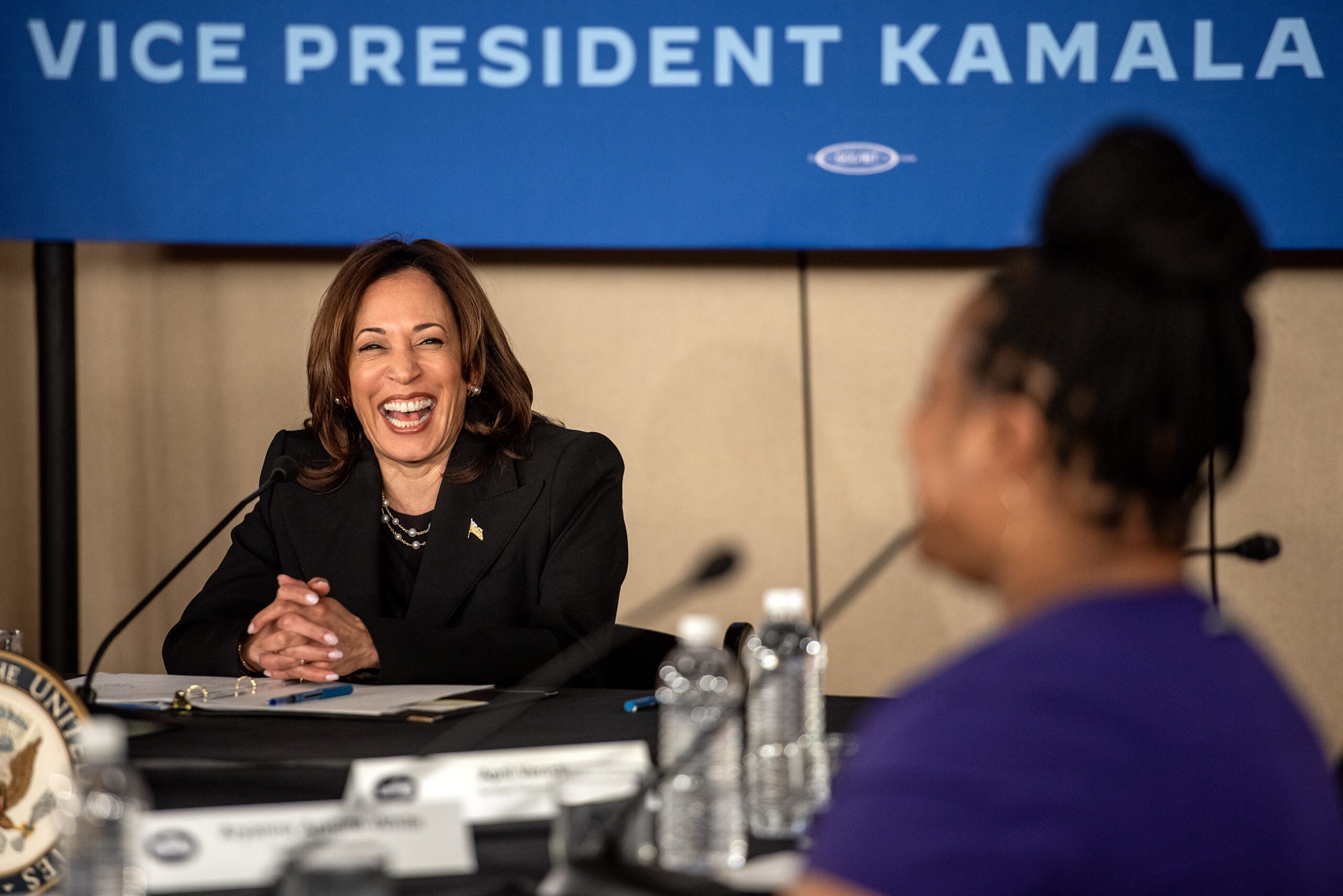
Vice President Kamala Harris met with certified nurse aides and labor union leaders in La Crosse to celebrate new federal rules for long-term care facilities and at-home services.
Harris hosted a roundtable at the Hmoob Cultural & Community Agency on Monday, speaking with state and national members of labor union SEIU and the head of the Centers for Medicare and Medicaid Services.
The federal agency finalized a rule on Monday that establishes minimum staffing levels for nurses and nurse aides at facilities that receive federal funding. It also requires long-term care facilities to have a registered nurse onsite at all times.
Stay informed on the latest news
Sign up for WPR’s email newsletter.
At the event, Harris said roughly 75 percent of federally-funded nursing homes are understaffed, and that has an impact on patient care.
“It means that there may be no one available to help them out of bed,” she said. “It means there may be no one available when they fall. It means that they will receive less medical attention because the care workers in that facility are going from room to room, resident to resident.”
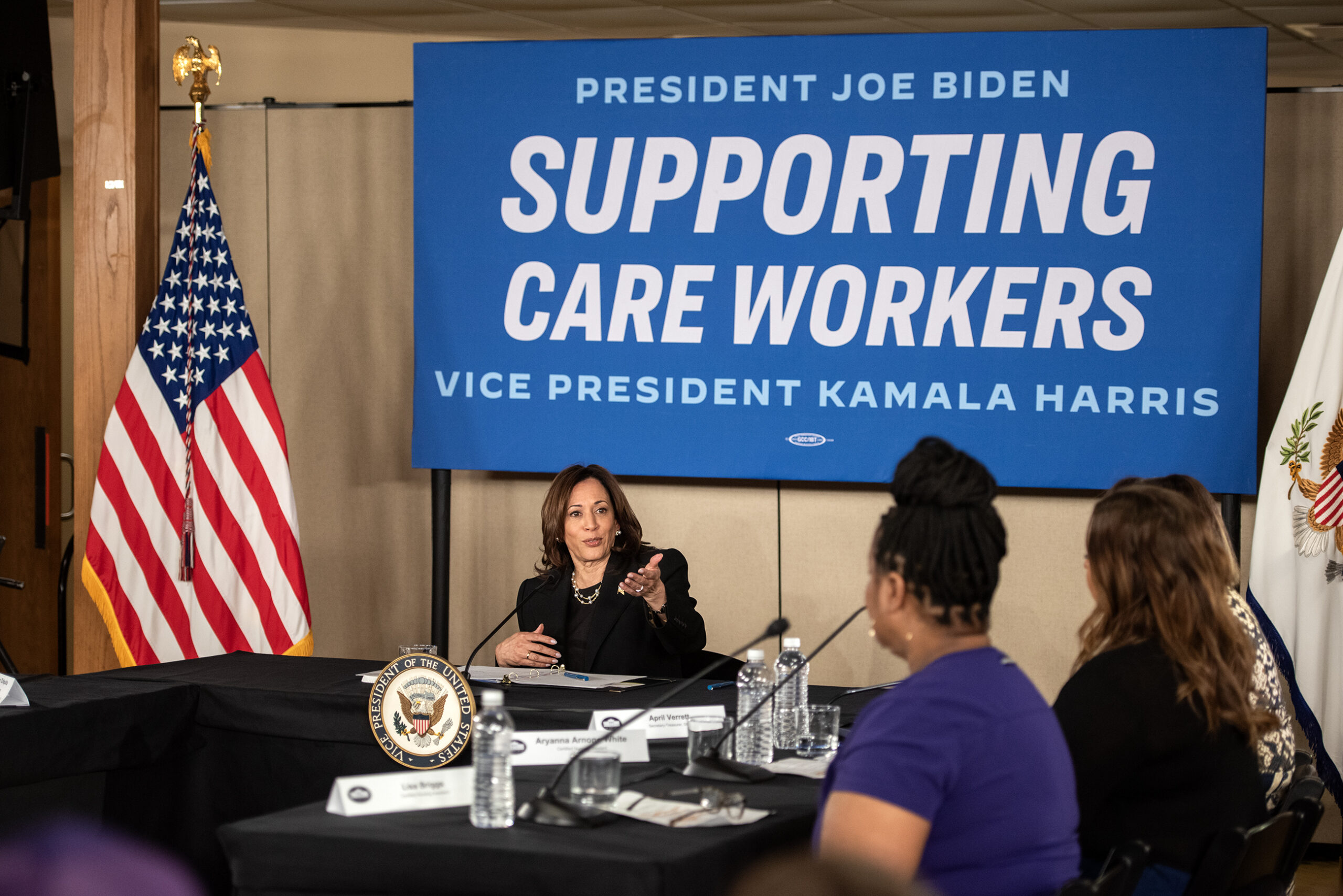
CMS also finalized a rule requiring at least 80 percent of Medicaid payments for home care services go to workers’ wages. Harris said the change will help raise wages for direct care workers, which will lead to less staff turnover and higher quality of care.
“This is about dignity,” she said. “It’s about the dignity that we as a society owe to those in particular who care for the least of these.”
CMS Administrator Chiquita Brooks-LaSure said at the event that the new requirements were based on feedback from thousands of clinicians, health care workers and patients. She said staff reported feeling pressure to leave for service industry jobs, “where they could earn higher wages without the emotional and physical demands of nursing home care.”
Lisa Briggs, a Milwaukee CNA who has worked for 28 years, was one of the SEIU members who spoke with Harris on Monday. She said there have been times when her facility was so understaffed that there were only two workers on a floor.
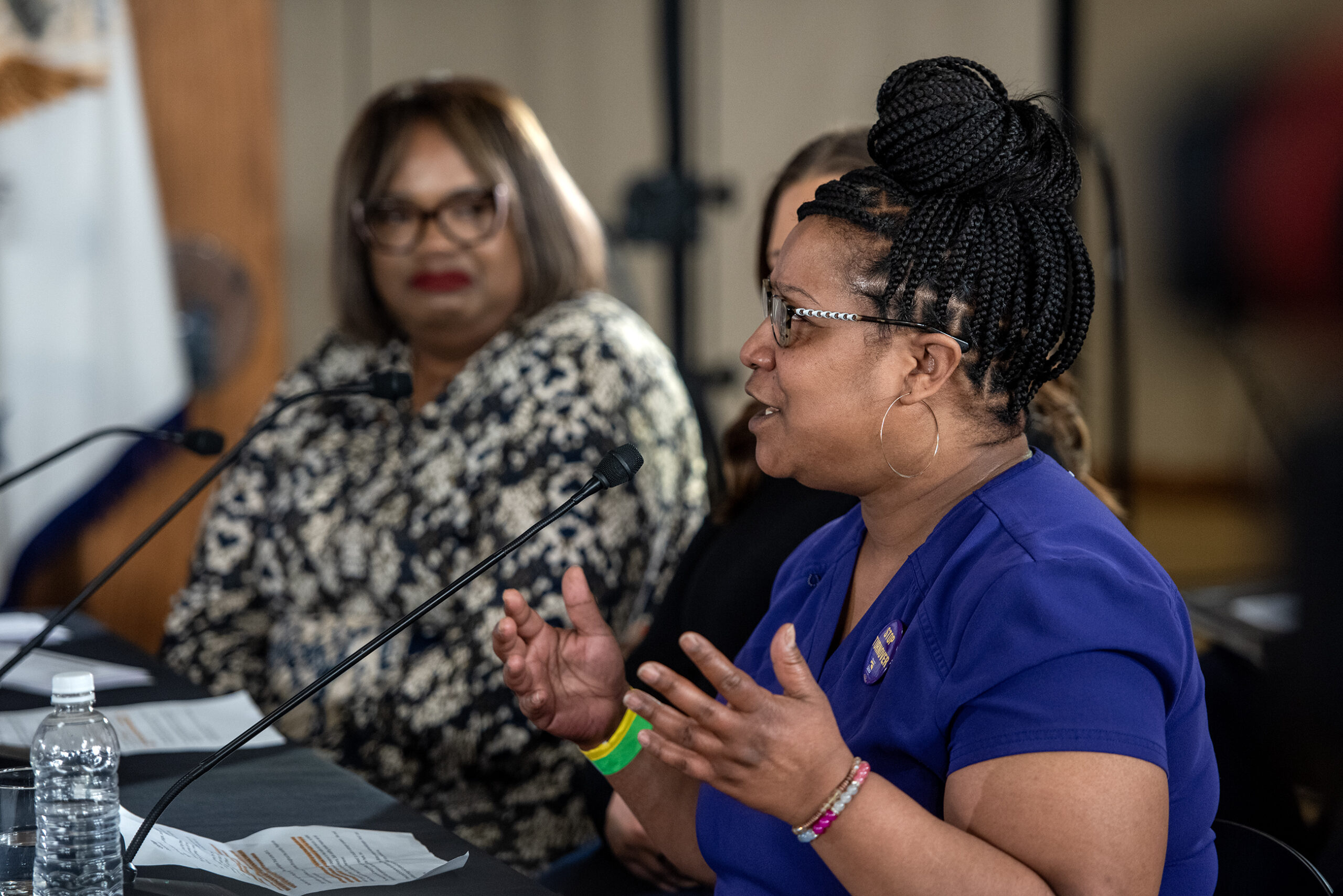
Briggs said it’s frustrating for both the workers and the residents of long-term care facilities. She remembered one person she cared for who loved to walk.
“When we were short staffed, we couldn’t walk her, so then she’d be real frustrated,” she said. “I’d be like, ‘I’m gonna do it tomorrow. I promise, I promise’. And you know, sometimes it happened, sometimes it didn’t.”
Aryanna Arnone-White, a CNA from Madison, told Harris that being short staffed takes a toll on care workers, and it makes it hard to provide the personal interactions patients need.
“You’re there through their happy times, their bad times, when no one comes to visit them on holidays or birthdays,” White said. “You are the one that is there to be able to share those moments with them.”
Wisconsin GOP voice skepticism about new requirements
Nursing home industry leaders in Wisconsin have previously voiced concerns about their ability to meet new standards after what they describe as years of workforce challenges. Kathryn Brod, CEO of Leading Age Wisconsin, said in February that her organization doesn’t “believe that one size fits all staffing ratios guarantee quality.”
Wisconsin Republicans echoed some of this skepticism about the new requirements during a call with reporters on Monday.
Republican U.S. Sen. Ron Johnson told reporters that enforcing the rule would mean more federal spending at a time when the federal deficit is more than $1 trillion.
“From my standpoint, I’m not a fan of the federal government. I think it causes or exacerbates more problems than it solves,” said Johnson, adding that he would support state and local solutions to the issue instead.
During her visit to La Crosse, Harris also hosted a campaign event to highlight her and President Joe Biden’s commitment to protecting reproductive health care.
It’s the second time Harris has visited the state to talk about abortion access this year. She kicked off the White House’s official Fight for Reproductive Freedom tour during an event in Waukesha County in January. The vice president also visited Madison in March to announce a new federal apprenticeship program.
Harris told supporters at the La Crosse Center that after speaking about the issue across the country, she believes “the majority of us as Americans do have empathy.”
“What I’m finding is that more and more people will openly agree that one does not have to abandon their faith or deeply held beliefs to agree the government should not be telling her what to do with her body,” she said.
Wisconsin Public Radio, © Copyright 2024, Board of Regents of the University of Wisconsin System and Wisconsin Educational Communications Board.
Related Stories
Vp harris announces federal apprenticeship program during madison visit.

Wisconsin seniors face housing upheaval as assisted living homes reject Medicaid

Wisconsin’s nursing home industry could struggle with new federal staffing requirements
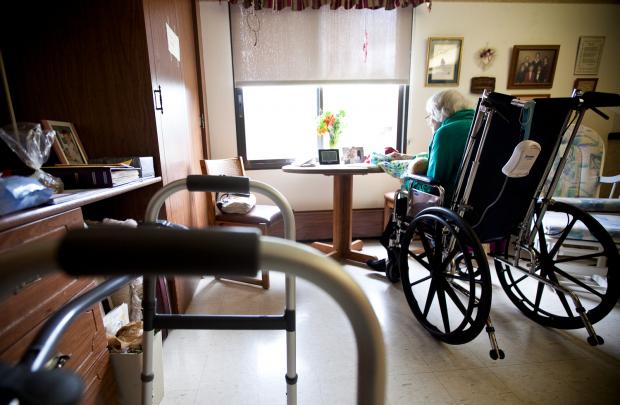
Vice President Kamala Harris voices support for abortion access at Wisconsin visit

A St. Louis nursing home closes suddenly, prompting wider concerns over care
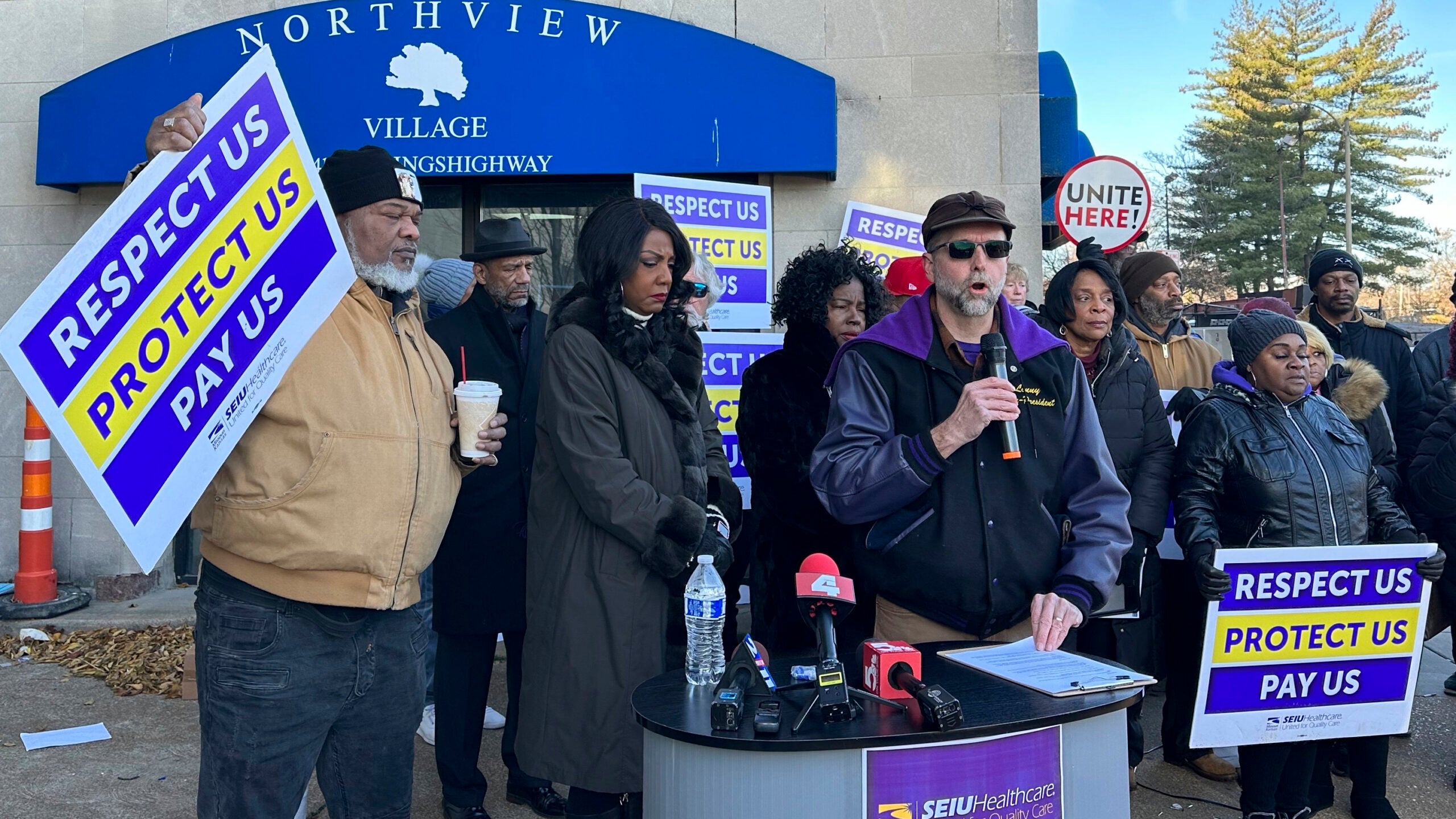
Vice President Harris announces final rules mandating minimum standards for nursing home staffing
The federal government is for the first time requiring nursing homes to have minimum staffing levels after the COVID-19 pandemic exposed grim realities in poorly staffed facilities for older and disabled Americans.
Vice President Kamala Harris announced the final rules on Monday before a trip to La Crosse, Wisconsin, where she will talk to nursing home care employees. In the battleground state, Harris also will hold a campaign event focused on abortion rights.
President Joe Biden first announced his plan to set nursing home staffing levels in his 2022 State of the Union address, but his Democratic administration has taken longer to nail down a final rule as health care worker shortages plague the industry. Current law only requires that nursing homes have “sufficient” staffing, leaving it up to states for interpretation.
The new rules implement a minimum number of hours that staff members spend with residents. They also require a registered nurse to be available around the clock at the facilities, which are home to about 1.2 million people. The rules dictate that 80% of Medicaid payments for home care providers go to workers’ wages.
Allies of older adults have sought the regulation for decades, but the rules will most certainly draw pushback from the nursing home industry.
The nursing home care event will mark Harris’ third visit to the battleground state this year and is part of Biden’s push to earn the support of union workers. Republican challenger Donald Trump made inroads with blue-collar workers in his 2016 victory. Biden regularly calls himself the “most pro-union” president in history and has received endorsements from leading labor groups such as the AFL-CIO, the American Federation of Teachers and the American Federation of State, County and Municipal Employees.
Harris will gather nursing home care workers at an event Monday joined by Chiquita Brooks-Lasure, administrator of the Centers for Medicare and Medicaid Services, and April Verrett, secretary-treasurer of the Service Employees International Union.
The coronavirus pandemic, which claimed more than 167,000 nursing home residents in the U.S., exposed the poor staffing levels at the facilities and led many workers to leave the industry. Advocates for the elderly and disabled reported residents who were neglected, going without meals and water or kept in soiled diapers for too long. Experts said staffing levels are the most important marker for quality of care.
The new rules call for staffing equivalent to 3.48 hours per resident per day, just over half an hour of it coming from registered nurses. The government said that means a facility with 100 residents would need two or three registered nurses and 10 or 11 nurse aides as well as two additional nurse staff per shift to meet the new standards.
The average U.S. nursing home already has overall caregiver staffing of about 3.6 hours per resident per day, including RN staffing just above the half-hour mark, but the government said a majority of the country’s roughly 15,000 nursing homes would have to add staff under the new regulation.
The new thresholds are still lower than those that had long been eyed by advocates after a landmark 2001 study funded by the Centers for Medicare and Medicaid Services recommended an average of 4.1 hours of nursing care per resident daily.
The government will allow the rules to be introduced in phases with longer timeframes for nursing homes in rural communities and temporary exemptions for places with workforce shortages.
When the rules were first proposed last year, the American Health Care Association, which lobbies for care facilities, rejected the changes.
The association’s president, Mark Parkinson, a former governor of Kansas, said Monday in a statement that the organization was disappointed and troubled that the Biden administration was moving forward with what he called an “unfunded mandate.”
“It is unconscionable that the Administration is finalizing this rule given our nation’s changing demographics and growing caregiver shortage,” Parkinson said. “Issuing a final rule that demands hundreds of thousands of additional caregivers when there’s a nationwide shortfall of nurses just creates an impossible task for providers.”
Parkinson said the association hopes to work with lawmakers on “more meaningful solutions” to help boost the long term care workforce.”
Copyright 2024 WBAY. All rights reserved.

10-year-old boy confesses to killing a man in 2022
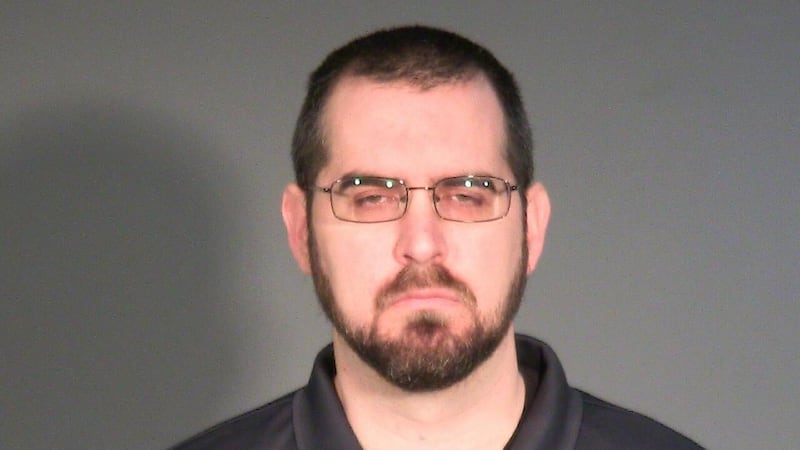
Former school resource officer charged with bestiality in Fond du Lac County

Body found in East River identified as missing woman

Victim of fatal St. Nazianz semi crash identified

Elijah Vue’s mother asks court to allow her release on signature bond
Latest news.

Vice President Kamala Harris visits La Crosse, campaigns on abortion rights

VP Kamala Harris to visit Hmong Cultural & Community Center in La Crosse

The origins of 20 political words and phrases

Second recount request by Green Bay City Council candidate denied
- Enter keyword Search
2024 OHSU Commute Census
The OHSU Transportation Census is an annual initiative that provides OHSU commuters an opportunity to guide a variety of OHSU transportation programs with their feedback. The census includes OHSU's Employee Commute Options survey, a reporting mandate of the State of Oregon.
To explore programs shaped by the OHSU Transportation Census visit: ohsu.edu/visit
To see past results, visit: ohsu.edu/transportation
TERMS AND DEFINITIONS
The survey uses the below working definitions to group a wide variety of commute options people may use. These definitions may differ from how these terms are used in other context.
Bike : Any device street legal in the bike lane with the exception of scooters (see below), including bikes, skateboards, roller skates and e-bikes without emissions. Does not include assistive devices such as wheelchairs, adaptive scooters or other devices that may be used in indoor settings (see "Walk").
Carpool : Multiple people sharing a vehicle that will be parked and remain for an extended period at the last destination. Does not include being dropped off by a driver who is immediately returning home or providing multiple rides (Uber, Lyft).
Drive alone : A single driver traveling in any motorized vehicle (including motorcycles and any vehicles with emissions) not legally permitted in a bike lane.
Drop off / Ride hail : Includes passenger vehicles where the driver does not remain at the destination. Includes Uber, Lyft and rides from household members who are not remaining on site.
Scooter: A zero-emission device that is street legal in local bike lanes, including electric and non-electric scooters that are personally owned or rented by the trip.
Telework : When working off site and not commuting to an onsite location the same day. Synonymous with telecommute and working remotely/offsite/virtual at home, a co-working space, etc.
Transit : Includes mass transit vehicles such as a bus, streetcar, light rail, train or ferry.
Vanpool: A pool of commuters who organize a group commute by van.
Walk : Includes walking, running and using personal mobility devices such as a wheelchair.

IMAGES
VIDEO
COMMENTS
Generally, nursing home visits are allowed, though some nursing homes may have specific visiting hours. Because seniors in nursing homes were disproportionately affected by COVID-19 at the height of the pandemic [1], nursing homes were often closed to visitors to protect staff and high-risk residents, according to Centers for Disease Control ...
A nursing home visit is a family-nurse contact which allows the health worker to assess the home and family situations in order to provide the necessary nursing care and health related activities. In performing home visits, it is essential to prepare a plan of visit to meet the needs of the client and achieve the best results of desired ...
A home care visit is when a professional carer comes to your home, often for between 30minutes to a few hours a day, to provide support with day to day tasks. This can range from personal care such as washing and dressing, to more practical task such as cooking meals or getting you moving. Its often referred to as hourly care, or domiciliary ...
4. Set Your Bag In A Clean Place. Make sure your bag is sitting on a table that is lined with clean paper. Then, wash your hands with soap and water. Take out all the tools you will need for your visit so they are easy to access. Put on an apron, close the bag, and you are ready for your nursing care treatment. 5.
Mar 10, 2021. Home health agencies. The Centers for Medicare & Medicaid Services (CMS), in collaboration with the Centers for Disease Control and Prevention (CDC), issued updated guidance today for nursing homes to safely expand visitation options during the COVID-19 pandemic public health emergency (PHE). This latest guidance comes as more ...
Today, the Centers for Medicare & Medicaid Services (CMS) issued revised guidance providing detailed recommendations on ways nursing homes can safely facilitate visitation during the coronavirus disease 2019 (COVID-19) pandemic. After several months of visitor restrictions designed to slow the spread of COVID-19, CMS recognizes that physical separation from family and other loved ones has ...
More. Nursing home visits are challenging at any time, and even more so during the pandemic. Most nursing homes now have strict visiting rules in place to protect residents from exposure to COVID ...
Nursing Homes. 4. Can visits occur in a resident's room if they have a roommate? A: Yes. Ideally an in-room visit would be conducted when the roommate is not present, howeverif that is not an option and as long as physical distancing can be maintained, then a visit may be conducted in the resident's room with their roommate present.
CMS regulations require all nursing home staff to be vaccinated against COVID-19 to participate in Medicare and Medicaid programs. Nursing home residents are also encouraged to get vaccinated. Their vaccination status should be documented as "up-to-date" or "not up-to-date" instead of "vaccinated" or "unvaccinated.".
What state agency licensed the nursing home and administrator? Does the nursing home have any openings? Does the nursing home ofer specialized training for staf to support residents living with dementia? Is the nursing home located close enough for my friends and family to visit? (A question for yourself)
Health officials have relaxed federal COVID-19 guidance for nursing homes for the first time since September, recommending that even unvaccinated visitors and residents be allowed to meet in ...
Medication organization and planning (Mediset pre-filling) Wellness checks. Seniors At Home is licensed by the state of California as a Home Health Agency; a California legal requirement to provide home nurse visits. To learn more about our skilled nursing visits, call us at 415-449-3700 or fill in the form below.
Schedule home visits at convenient times for the client and obtain consent for the visit. Respect the client's privacy and autonomy. 4. Communication: Establish effective communication with the client and their family. Listen actively, address concerns, and encourage open dialogue to better understand their needs. 5.
Home visitors work with expectant mothers to access prenatal care and engage in healthy behaviors during and after pregnancy. For example—. Pregnant participants are more likely to access prenatal care and carry their babies to term. Home visiting promotes infant caregiving practices like breastfeeding, which has been associated with positive ...
House calls and video visits in 37 states. Landmark partners with health plans to bring medical, behavioral health, and palliative care, along with social services, to patients in communities across the U.S. Our mobile providers visit patients in their homes through in-person house calls and telemedicine visits over video and phone.
Home visit practice is a healthcare service rendered by trained health professionals who visit clients in their own home to assess the home, environment, and family condition in order to provide appropriate healthcare needs and social support services. ... Hollenbeak C. S. Cost-effectiveness of postnatal home nursing visits for prevention of ...
Help pregnant women access prenatal care; Check to make sure children attend well-child visits; Connect caregivers with job training and education programs; Refer caregivers as needed to mental health or domestic violence resources; Discover more in our Primer and At a Glance resources. Home visiting outcomes are supported by research.
Nursing homes vary in quality of care and services they provide. Medicare assigns a rating based on health inspections, staffing and quality measures. More stars mean better quality of care. Updated: 01/12/2019 — Compare and see how the quality of care at SAINT MARY'S VILLA NURSING HOM scored versus its State and National averages.
Nursing homes have been severely impacted by COVID-19, with outbreaks causing high rates of infection, morbidity, and mortality. [1] The vulnerable nature of the nursing home population, combined with the inherent risks of congregate living in a healthcare setting, have required aggressive efforts to limit COVID-19 exposure and to prevent the spread of COVID-19 within these facilities.
The Russian public health care system provides a local pediatrician for the first time home visit and a few follow-up visits by the district pediatric nurse. You can make an appointment for the well-baby visit in most family clinics. Some clinics in Moscow provide pediatric house calls.
From 6 April 2024, a new Care Quality Commission (CQC) fundamental standard on visiting and accompanying (Regulation 9A) requires that care home residents must be facilitated to receive visits ...
210 East 7th Street Moscow, ID 83843. Write a review. Providing Assisted Living. Get Pricing Schedule A Meeting Payment Options. Speak with a Moscow, ID senior living advisor now. Call (888) 456-2736.
All nursing homes that receive federal funding through Medicare and Medicaid will need to provide a total of at least 3.48 hours of nursing care per resident per day, including three hours from ...
The new nursing home minimum staffing rule, the first new federal requirement finalized on Monday, requires all Medicare and Medicaid-funded nursing homes to provide residents with 3.48 hours of ...
LA CROSSE — In a visit to a purple region of Wisconsin on Monday, Vice President Kamala Harris announced new rules for nursing home staffing and rallied voters around abortion as the race for ...
Vice President Biden delivers a powerful speech to U.S. and Russian students and business leaders, hailing the successful "reset" of U.S.-Russian relations and reiterating his call for broader economic cooperation between the two countries. Vice President Joe Biden speaks to the American Chamber of Commerce and Russian students at Moscow ...
Visits to Nursing Homes. Host outdoor visits Create dedicated visitation space indoors Allow in-room visits when the resident's roommate is not present, if possible (visits may still occur if a roommate is present as long as physical distancing can be maintained) *The resident and visitor should wear a well-fitting mask, perform frequent
Certified nursing assistant Lisa Briggs, right, speaks during Vice President Kamala Harris' visit Monday, April 22, 2024, at the Hmoob Cultural & Community Agency in La Crosse, Wis. Angela Major/WPR. Briggs said it's frustrating for both the workers and the residents of long-term care facilities. She remembered one person she cared for who ...
The average U.S. nursing home already has overall caregiver staffing of about 3.6 hours per resident per day, including RN staffing just above the half-hour mark, but the government said a ...
2024 OHSU Commute Census. May 12, 2023. The OHSU Transportation Census is an annual initiative that provides OHSU commuters an opportunity to guide a variety of OHSU transportation programs with their feedback. The census includes OHSU's Employee Commute Options survey, a reporting mandate of the State of Oregon.